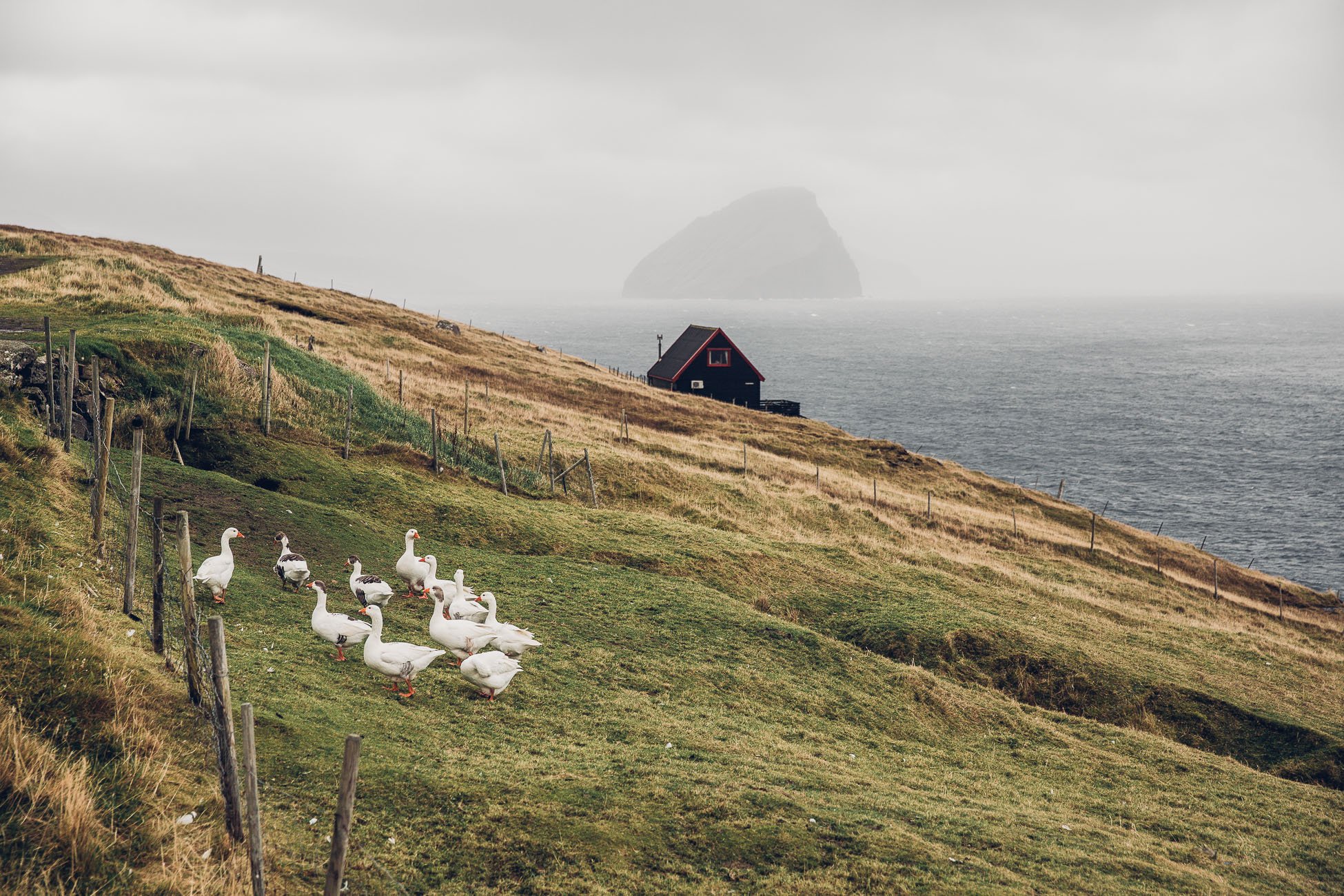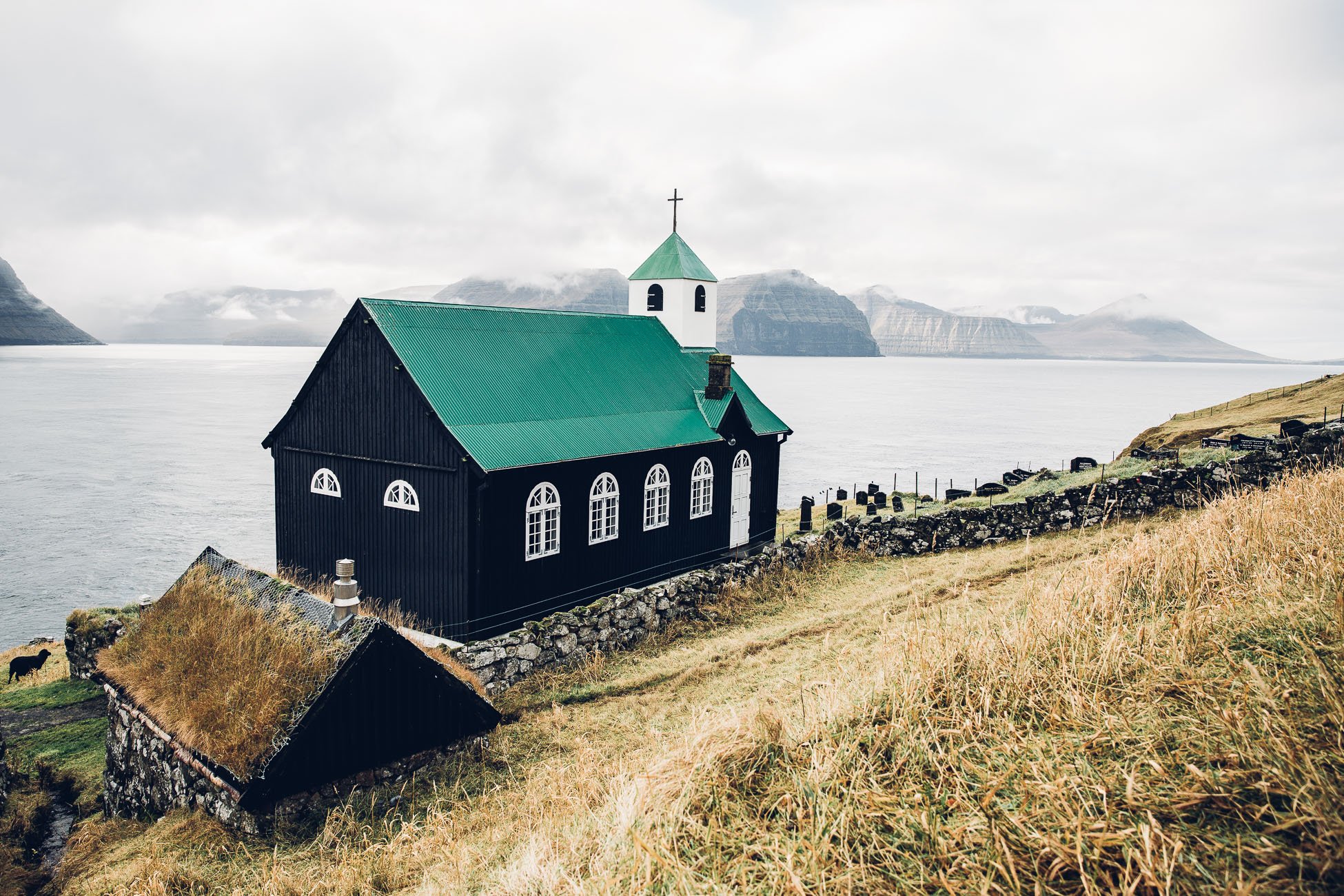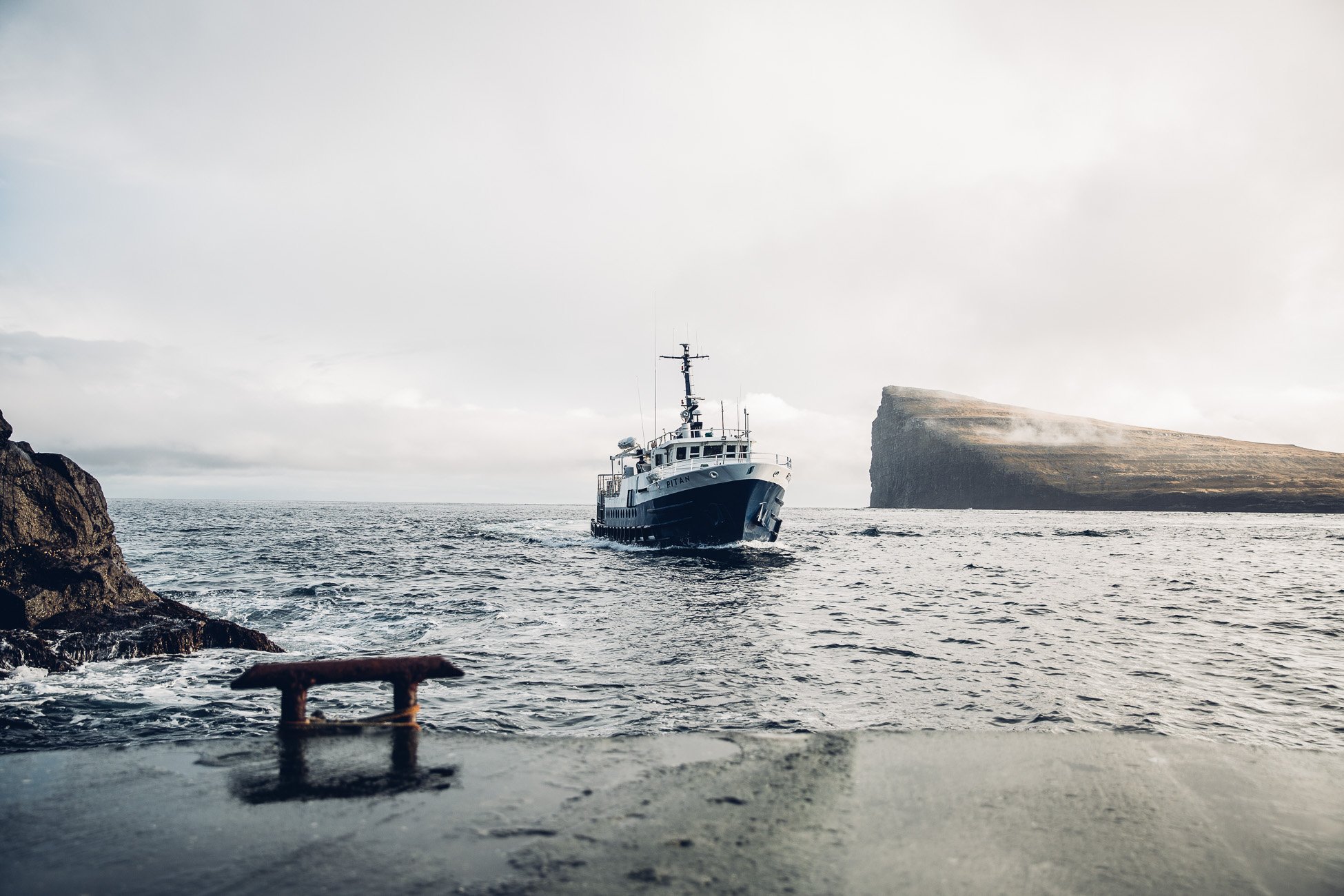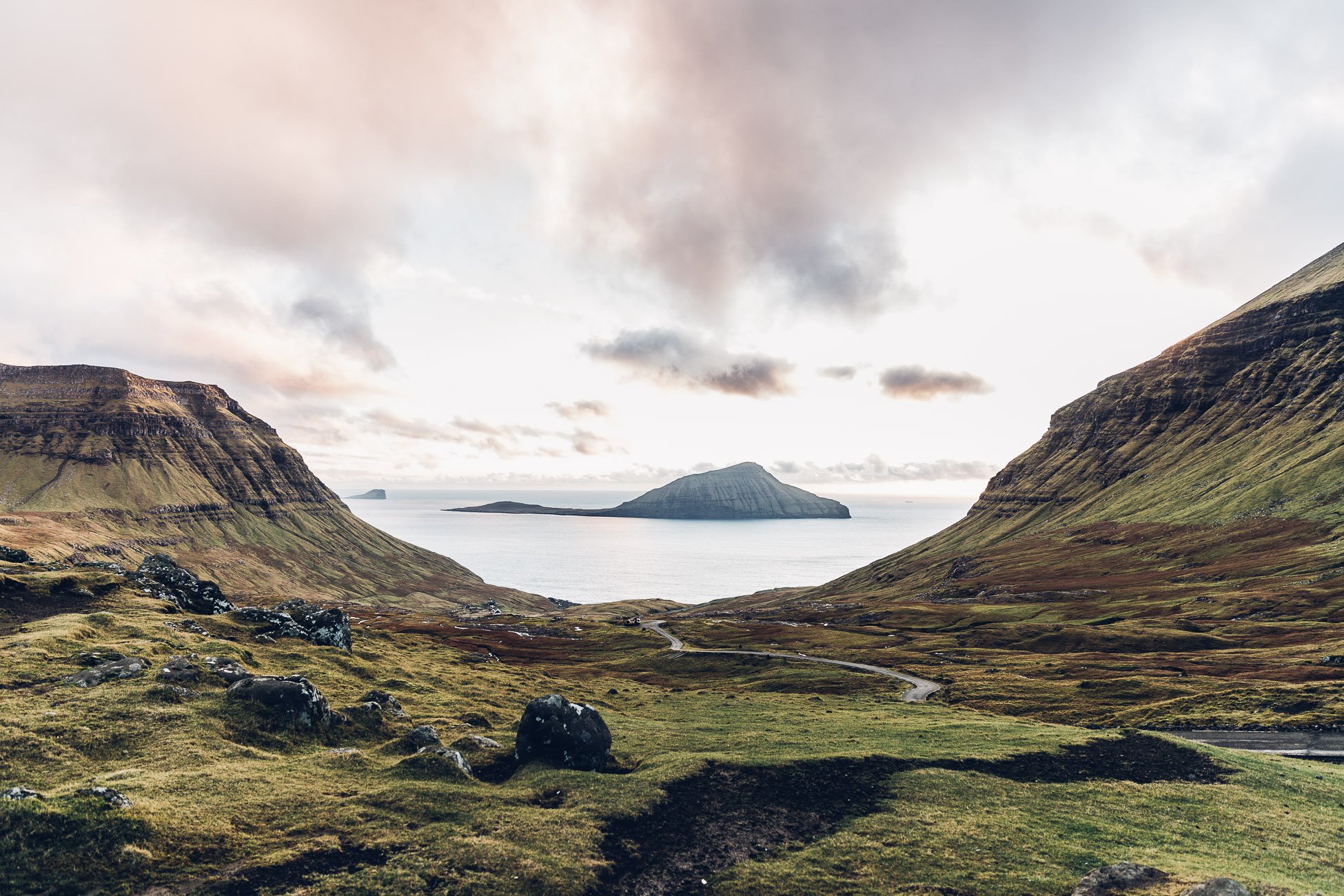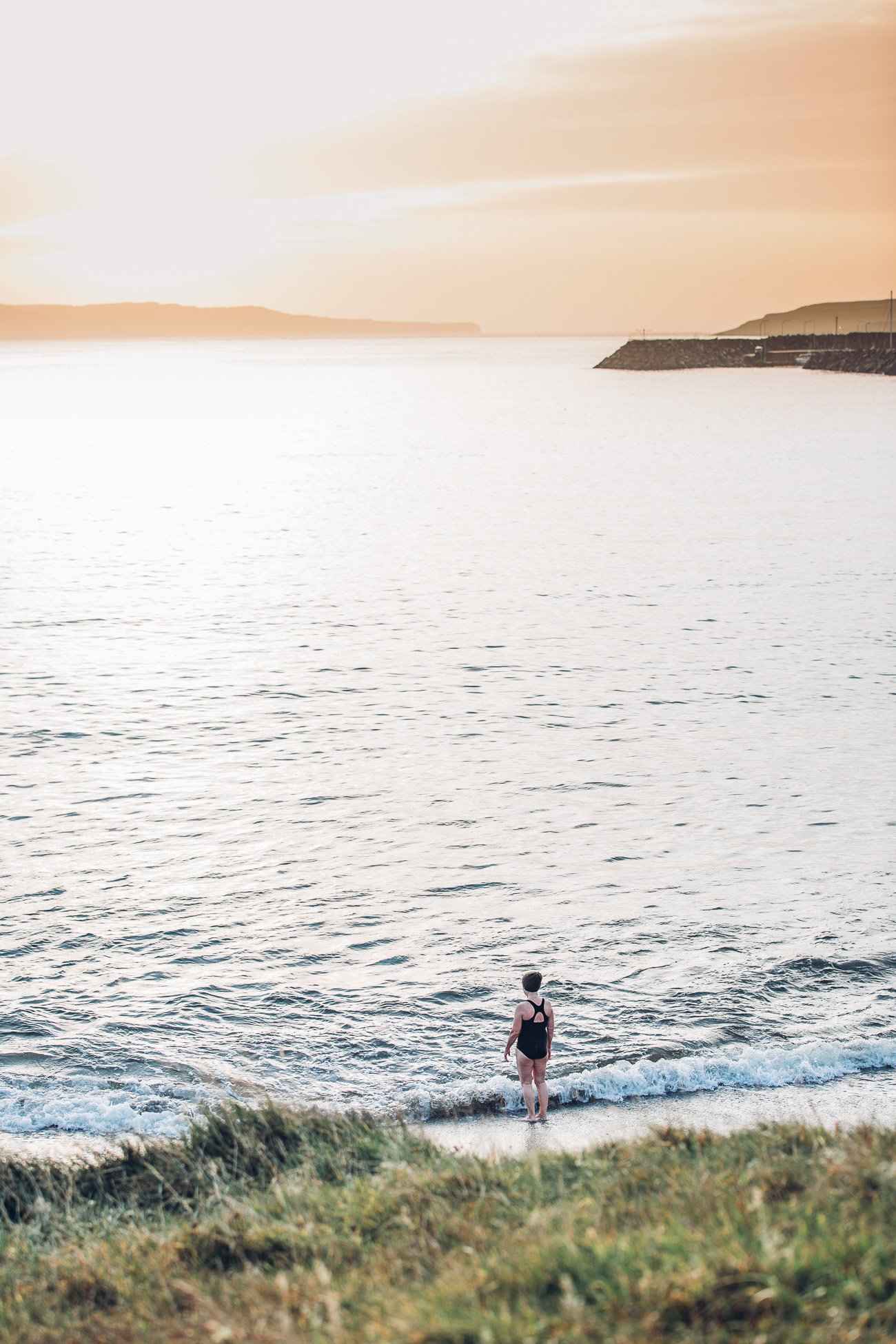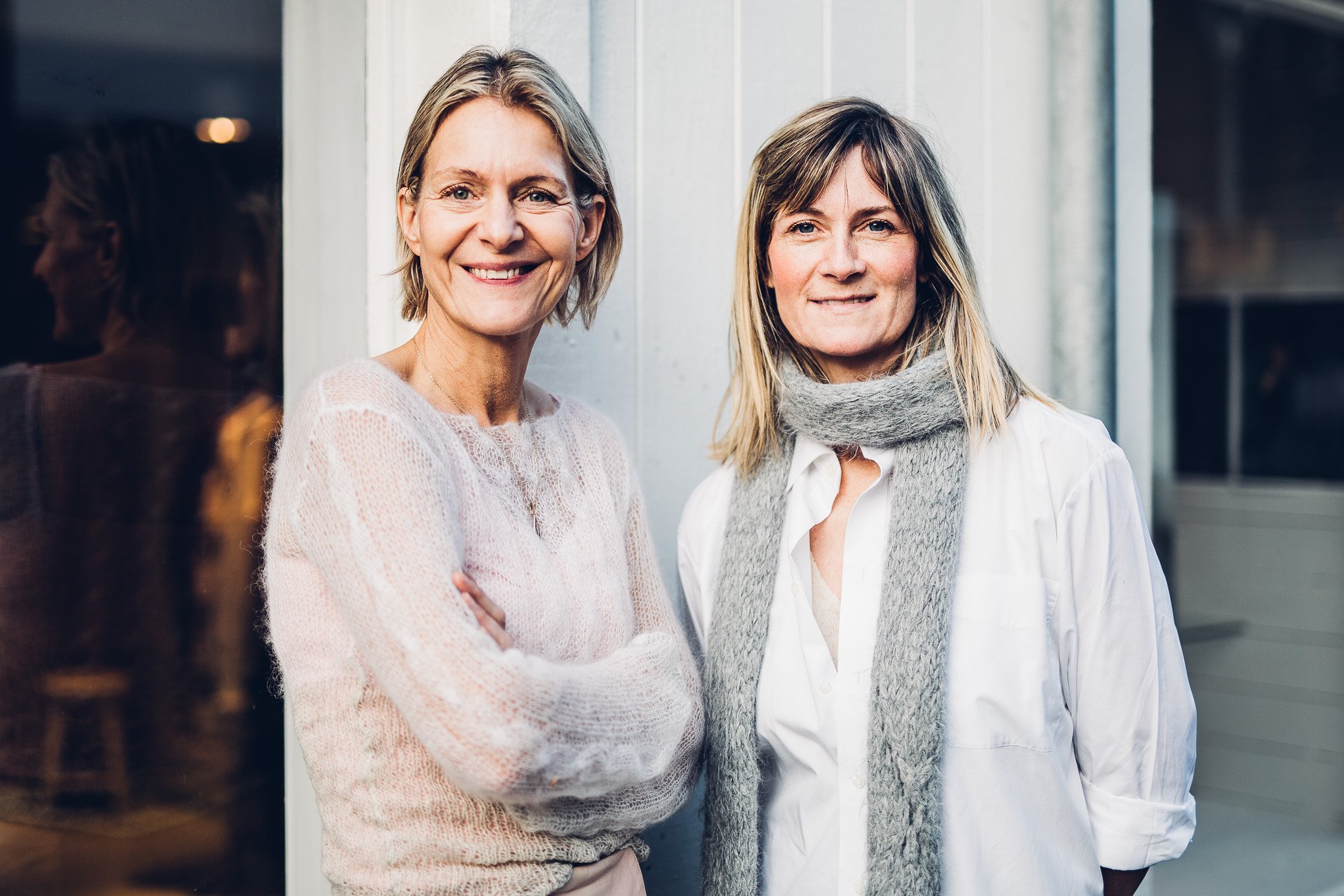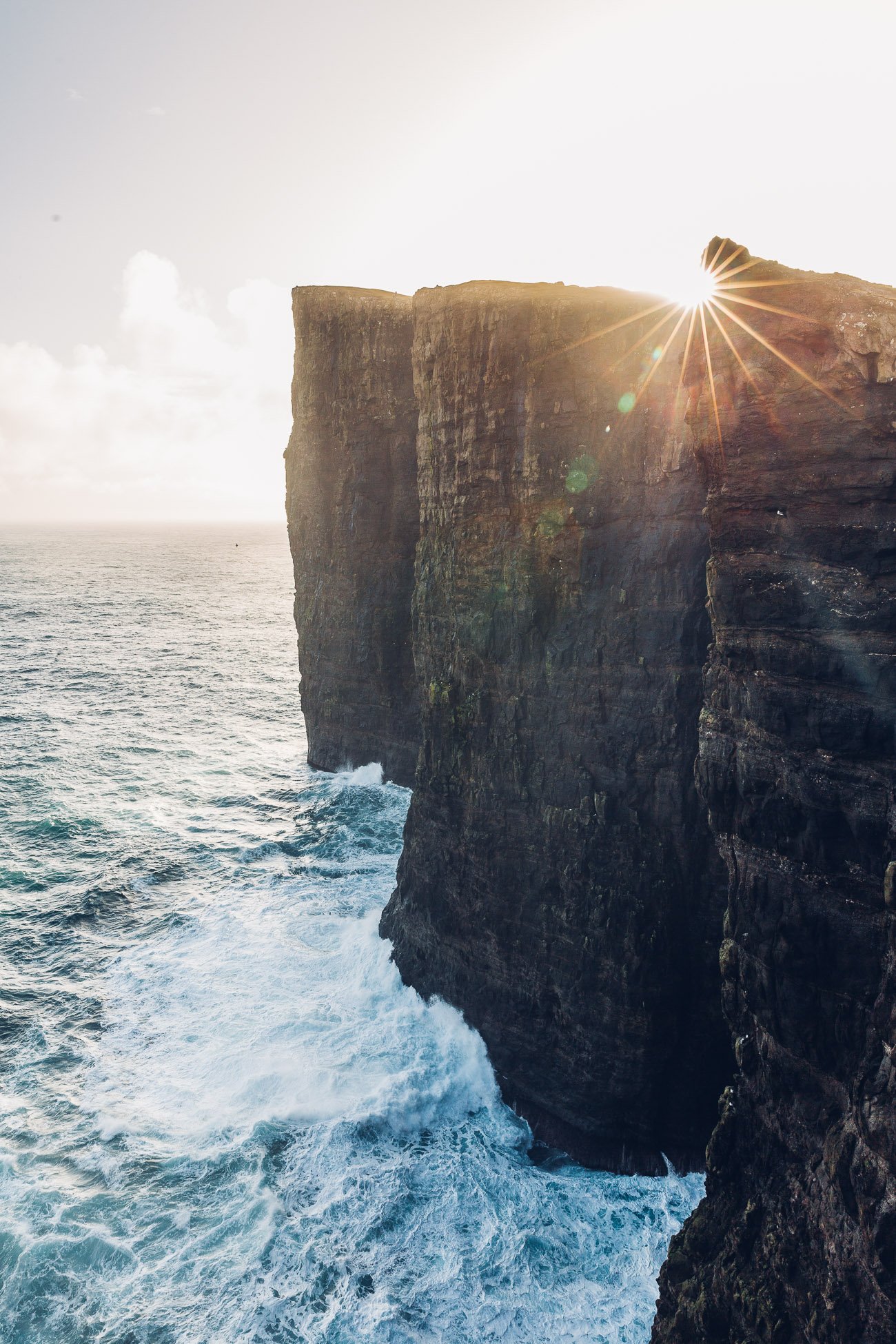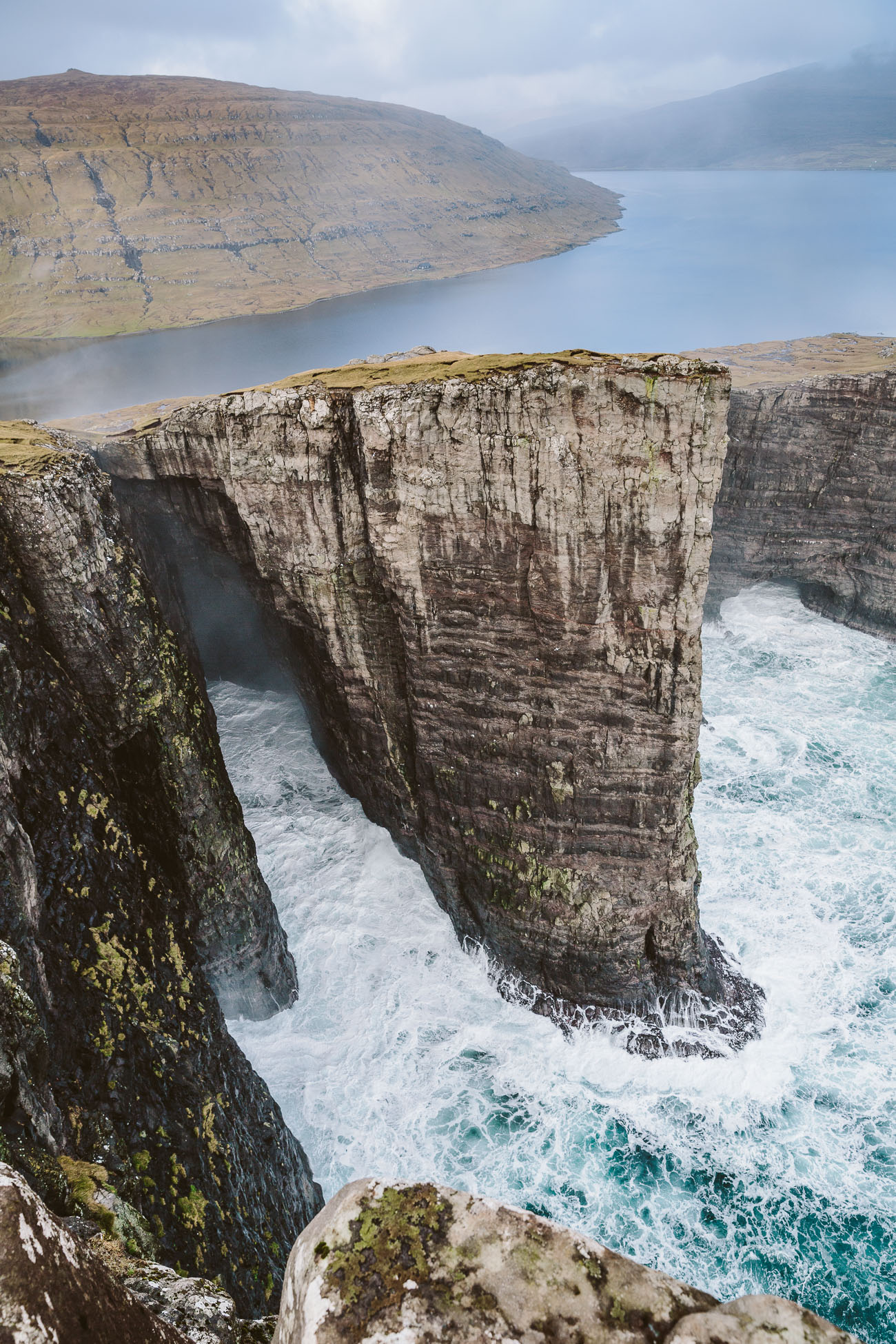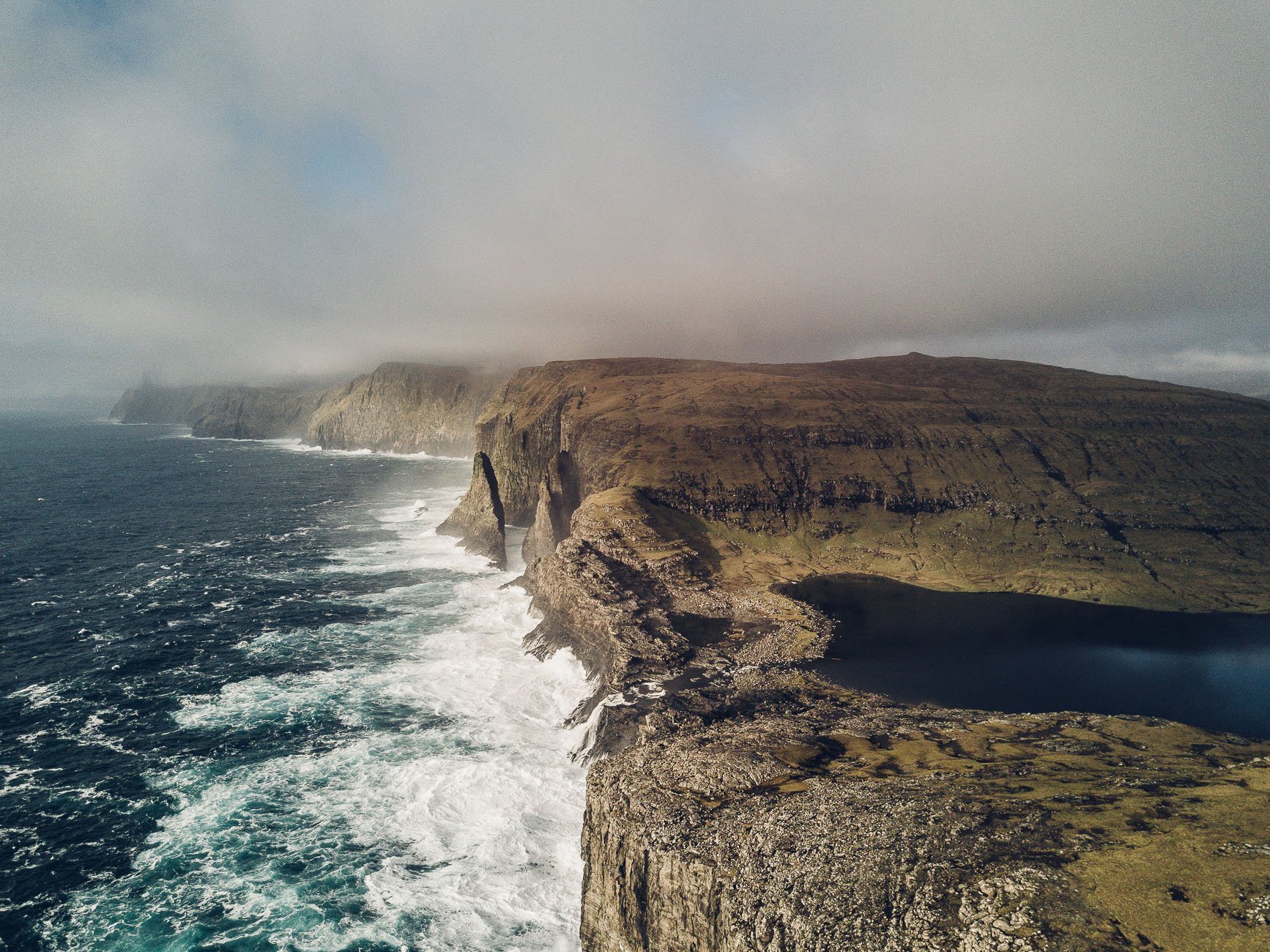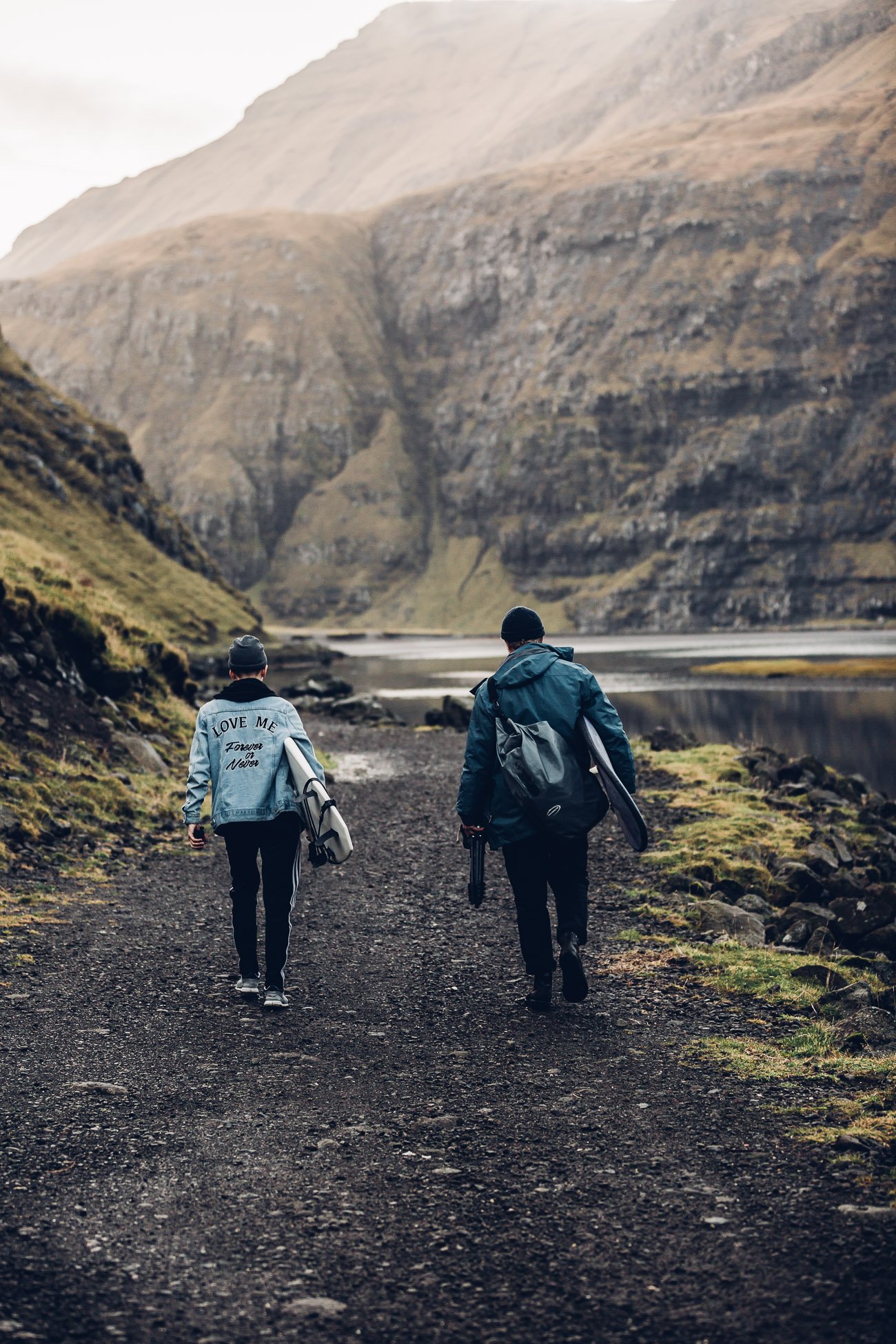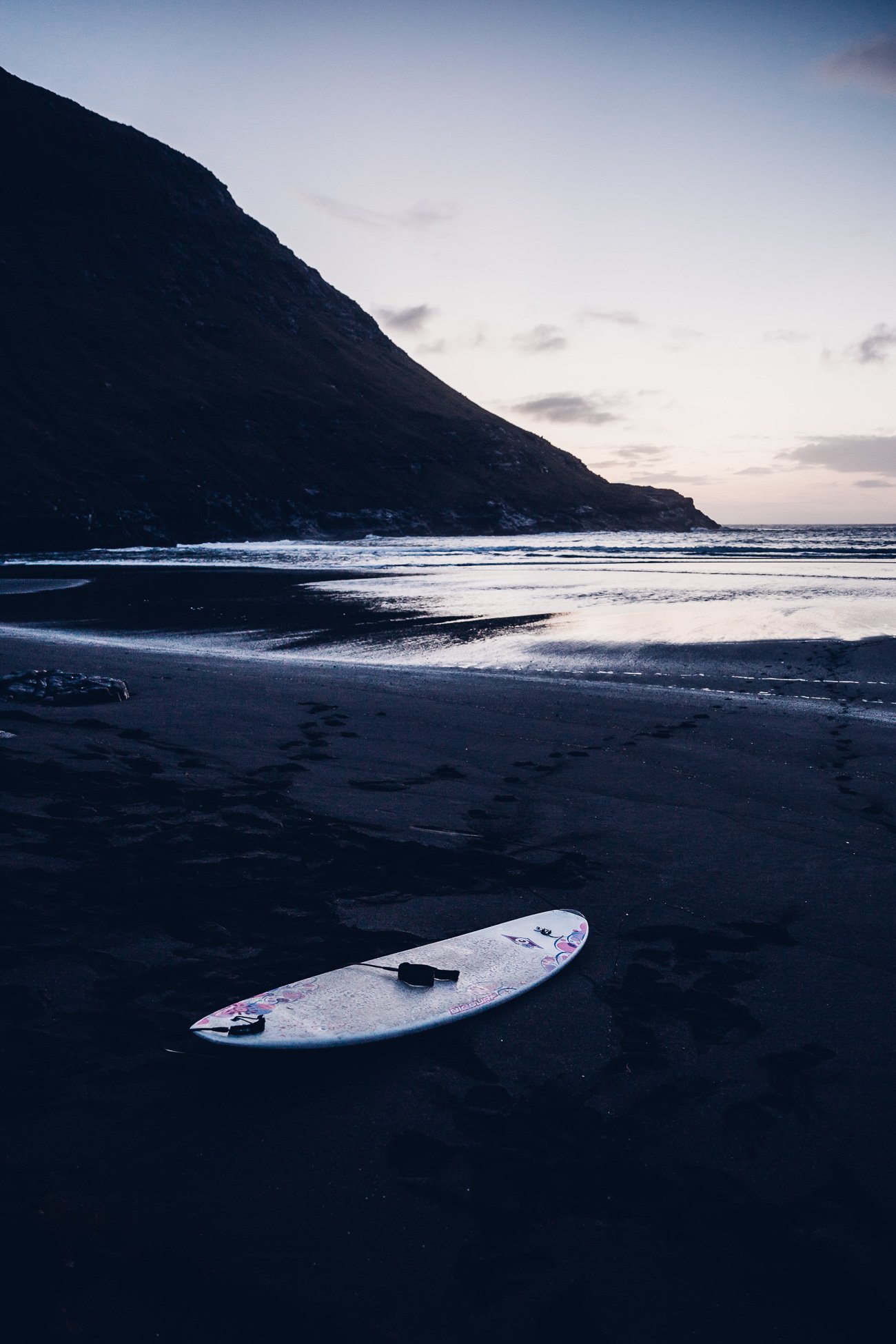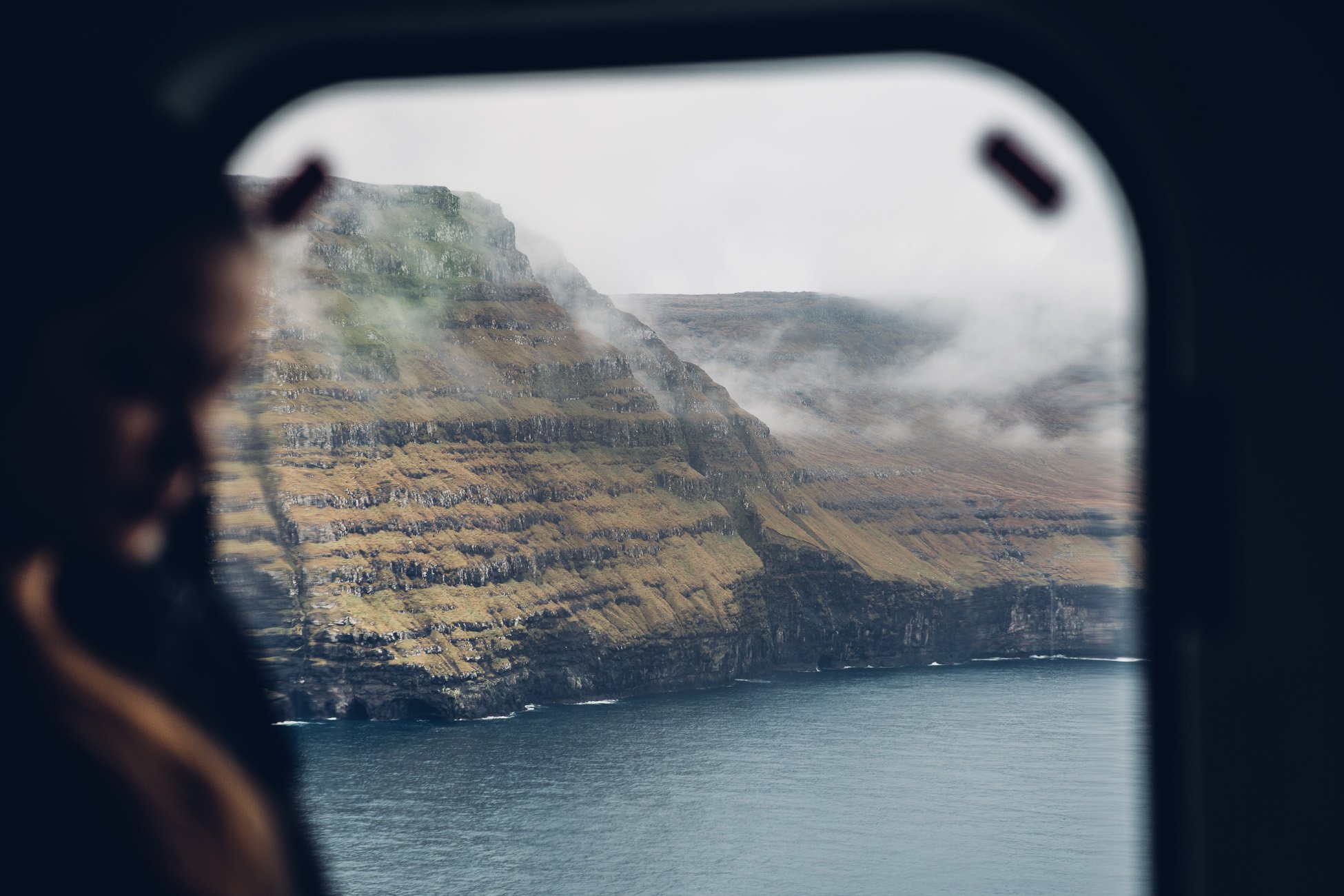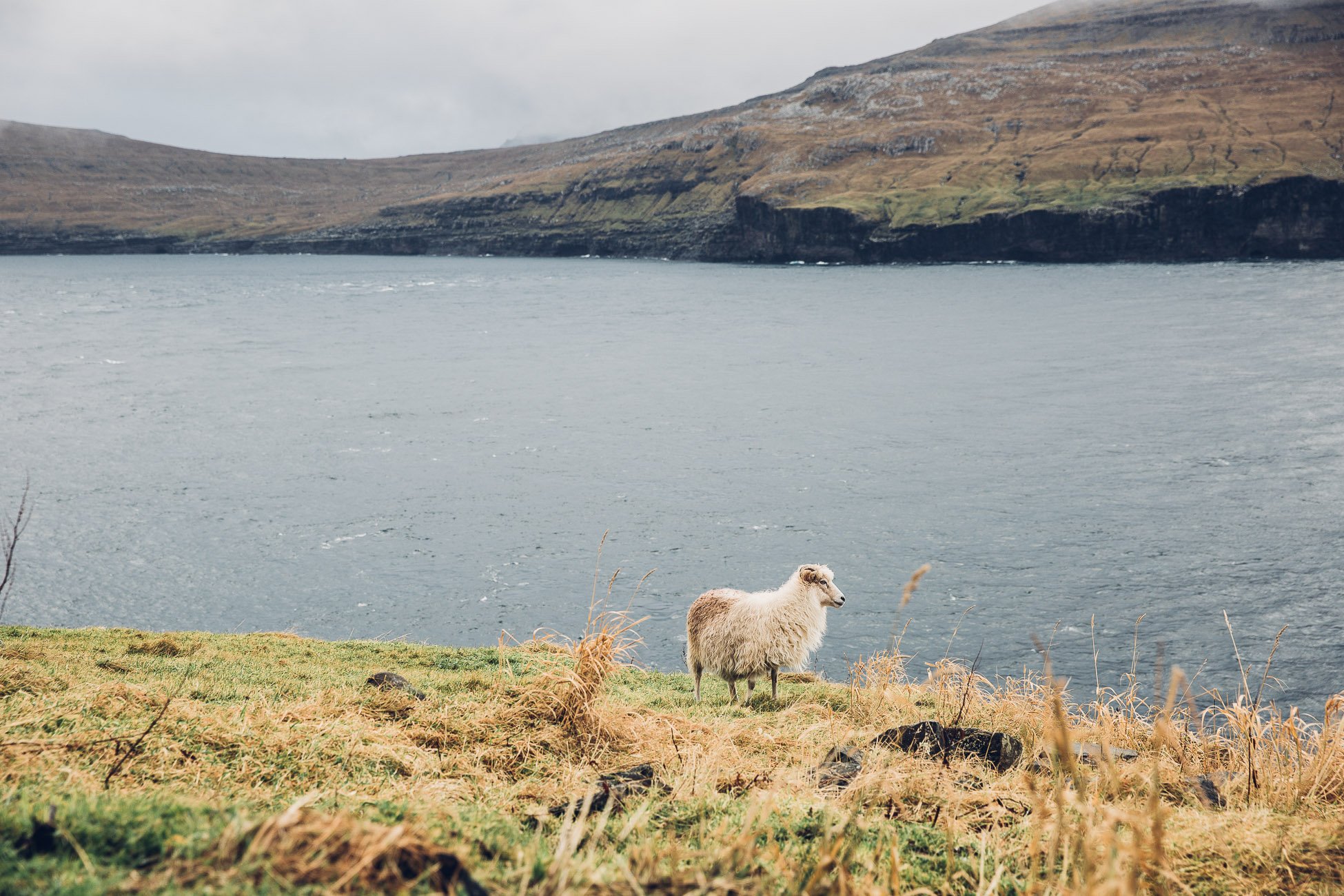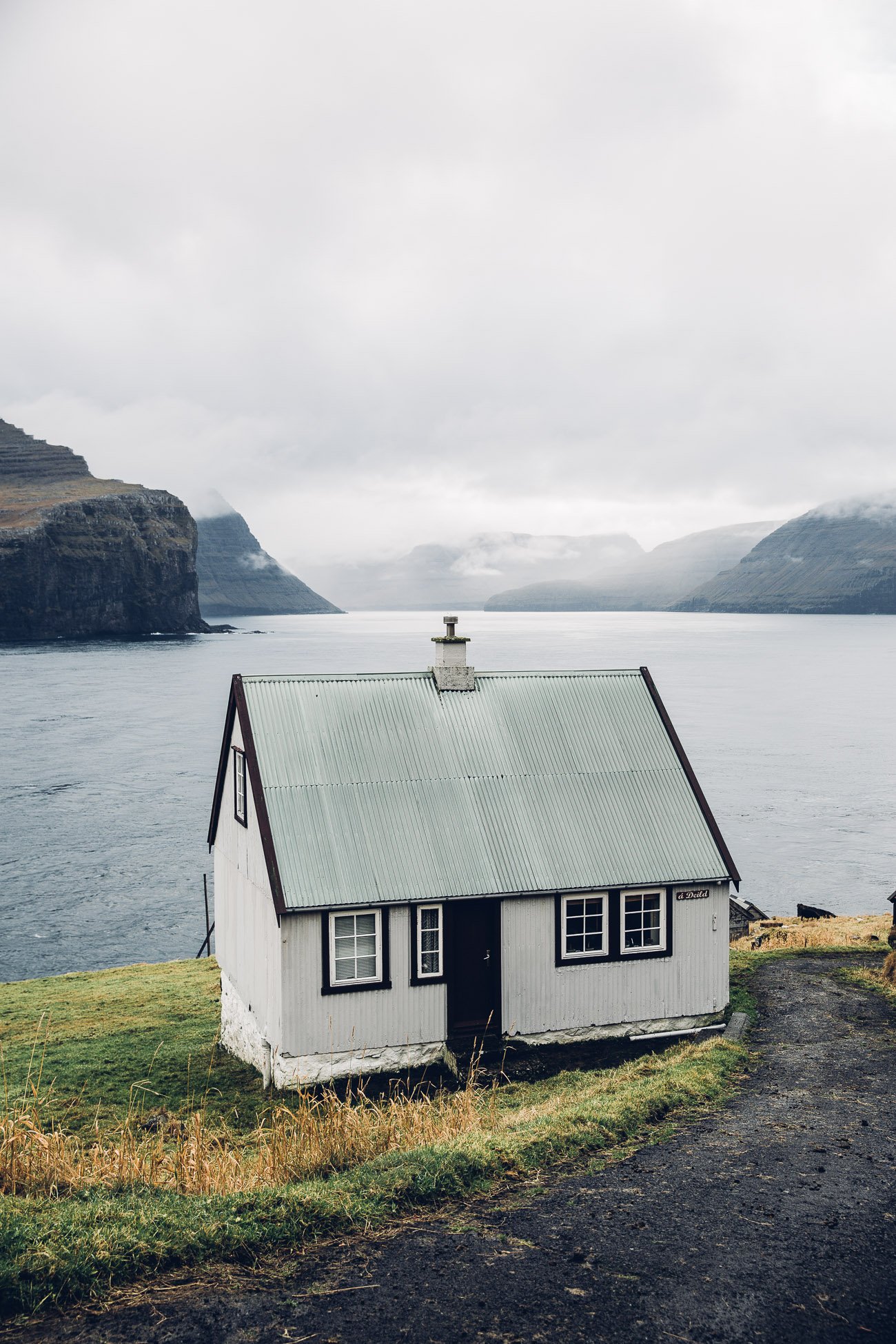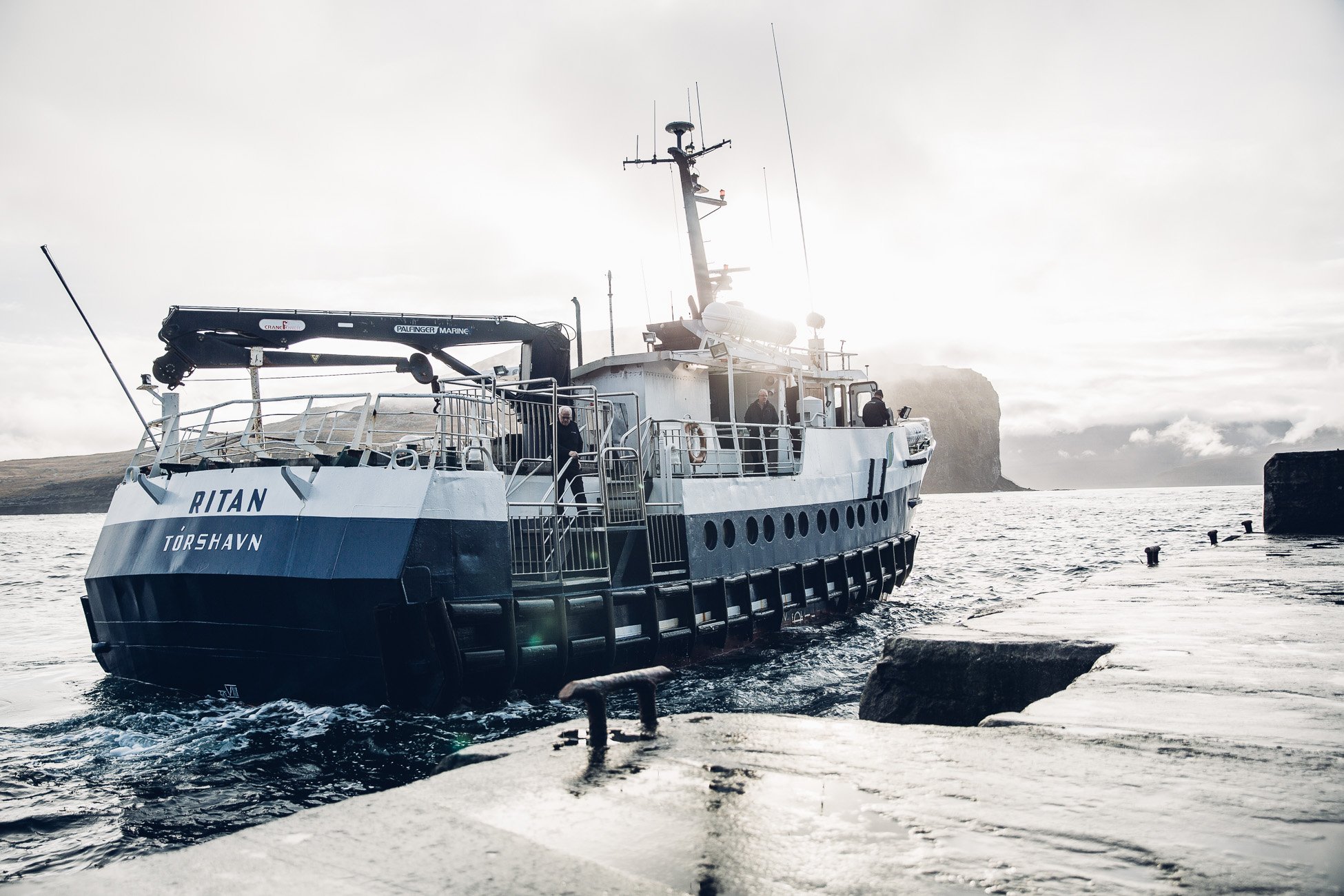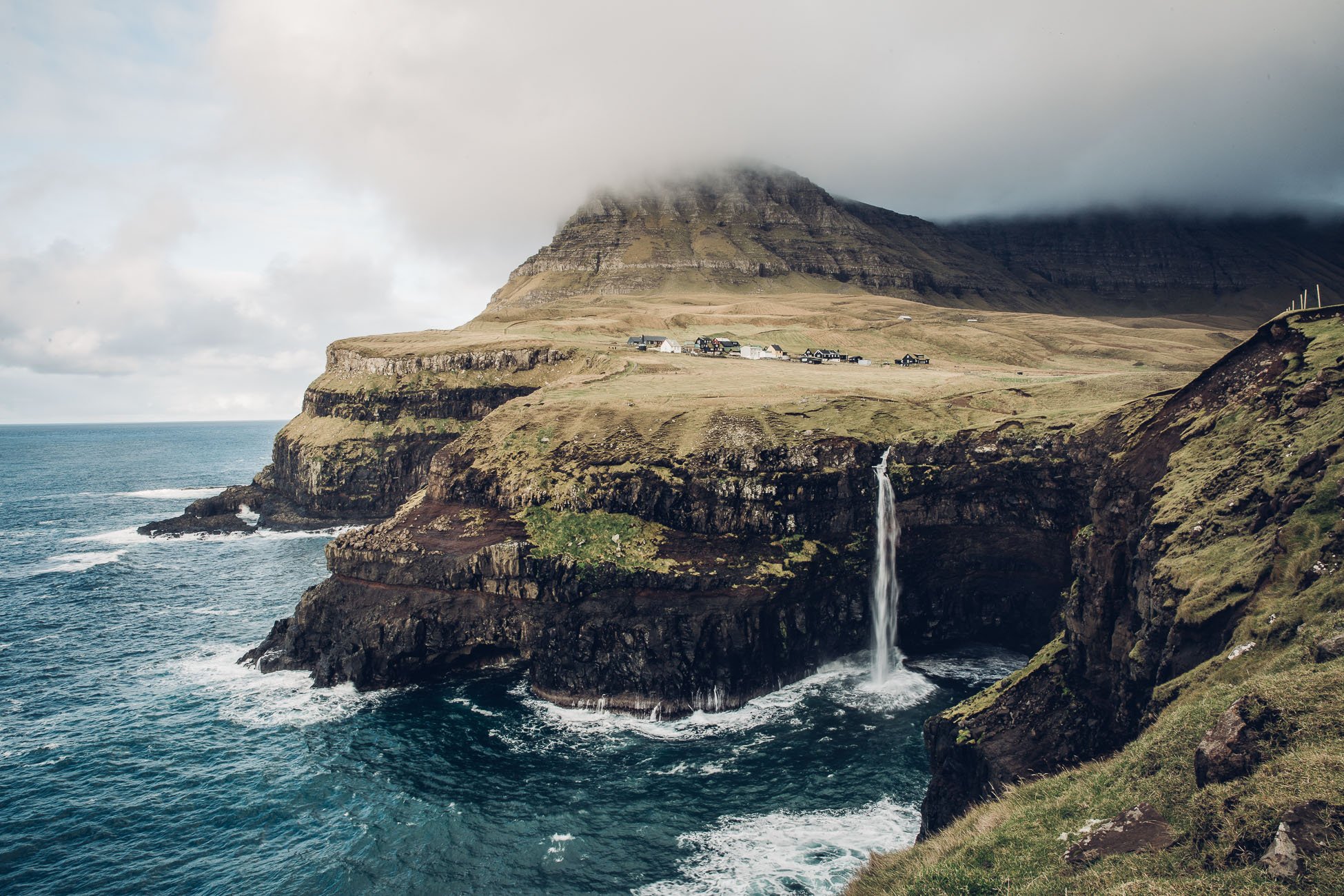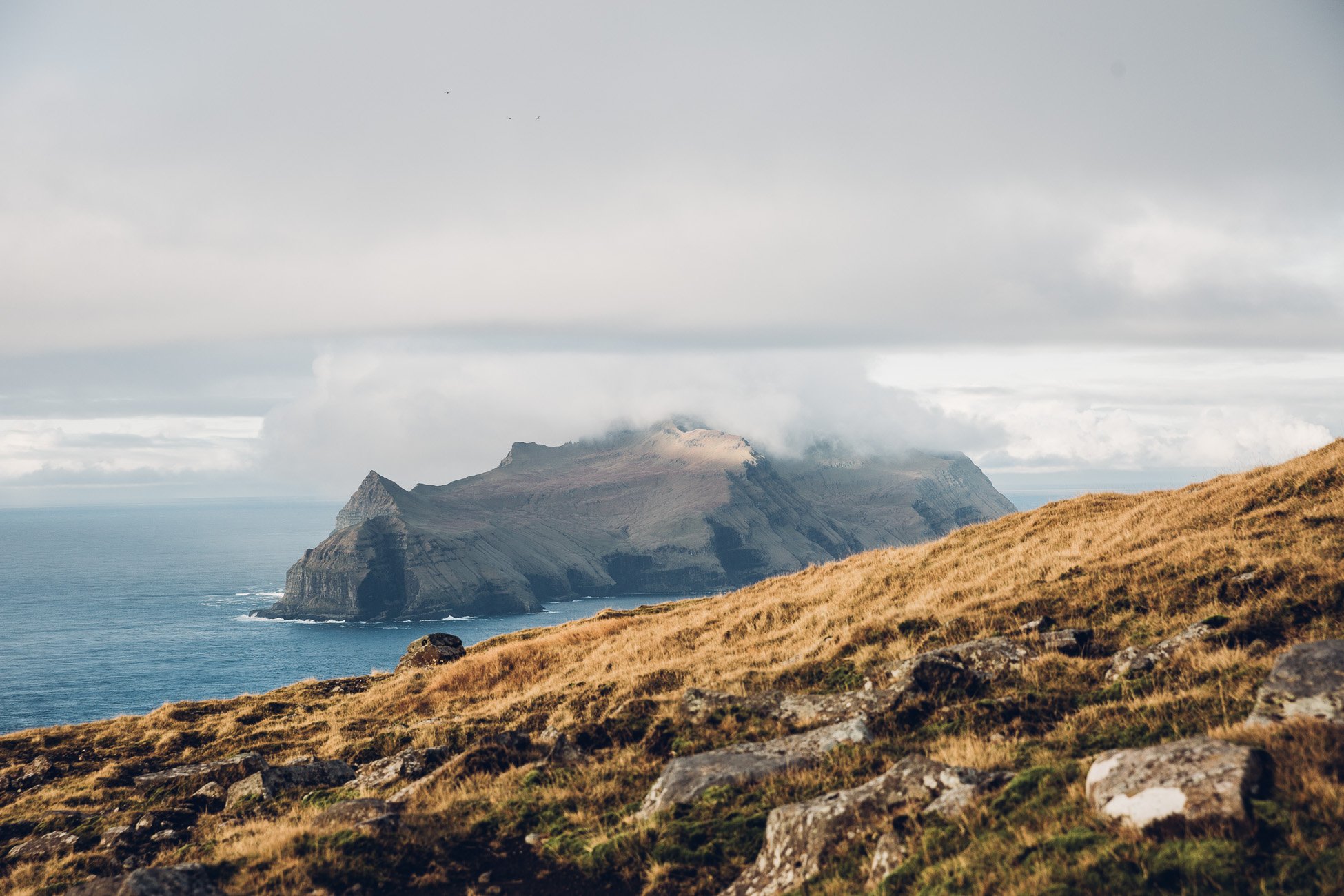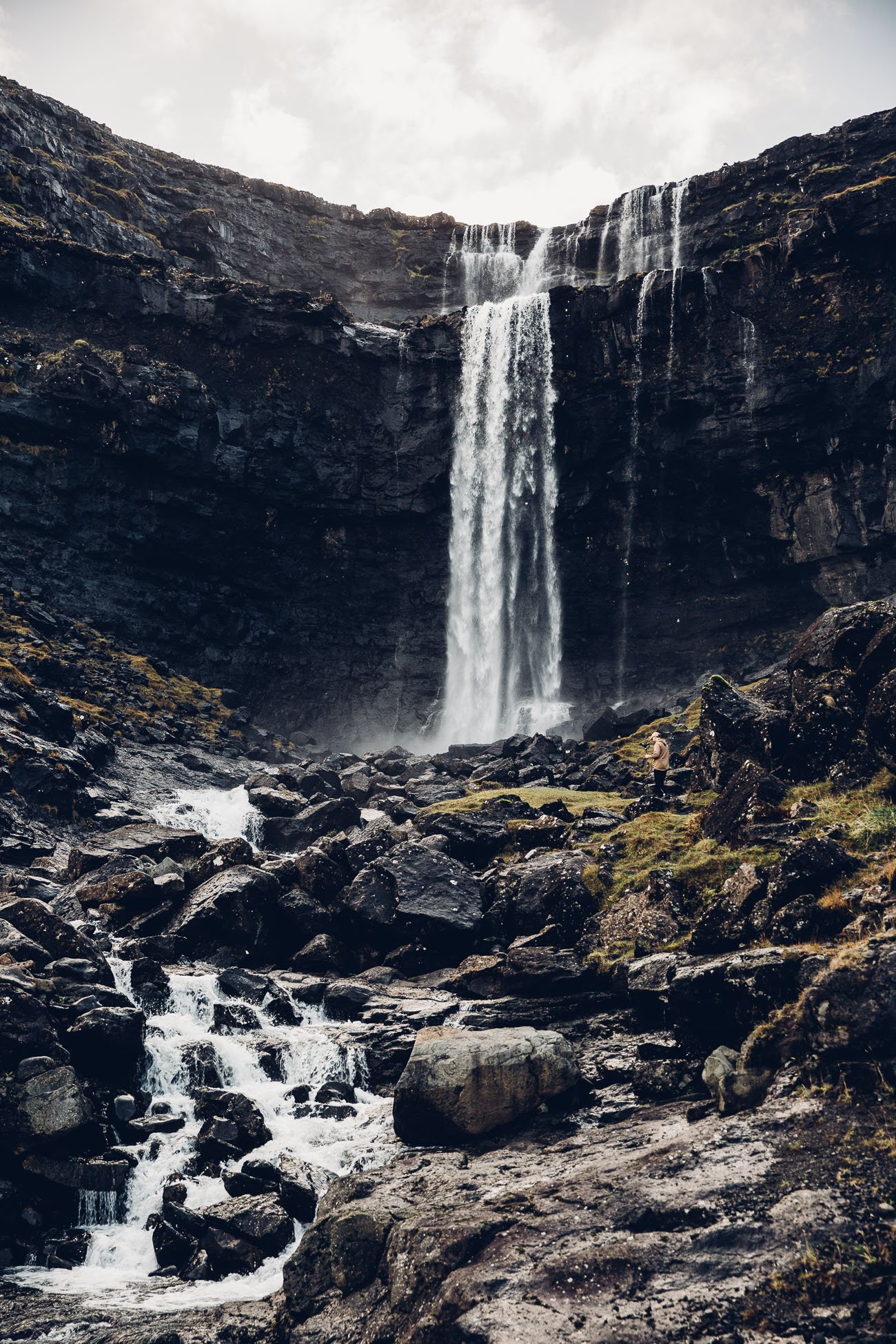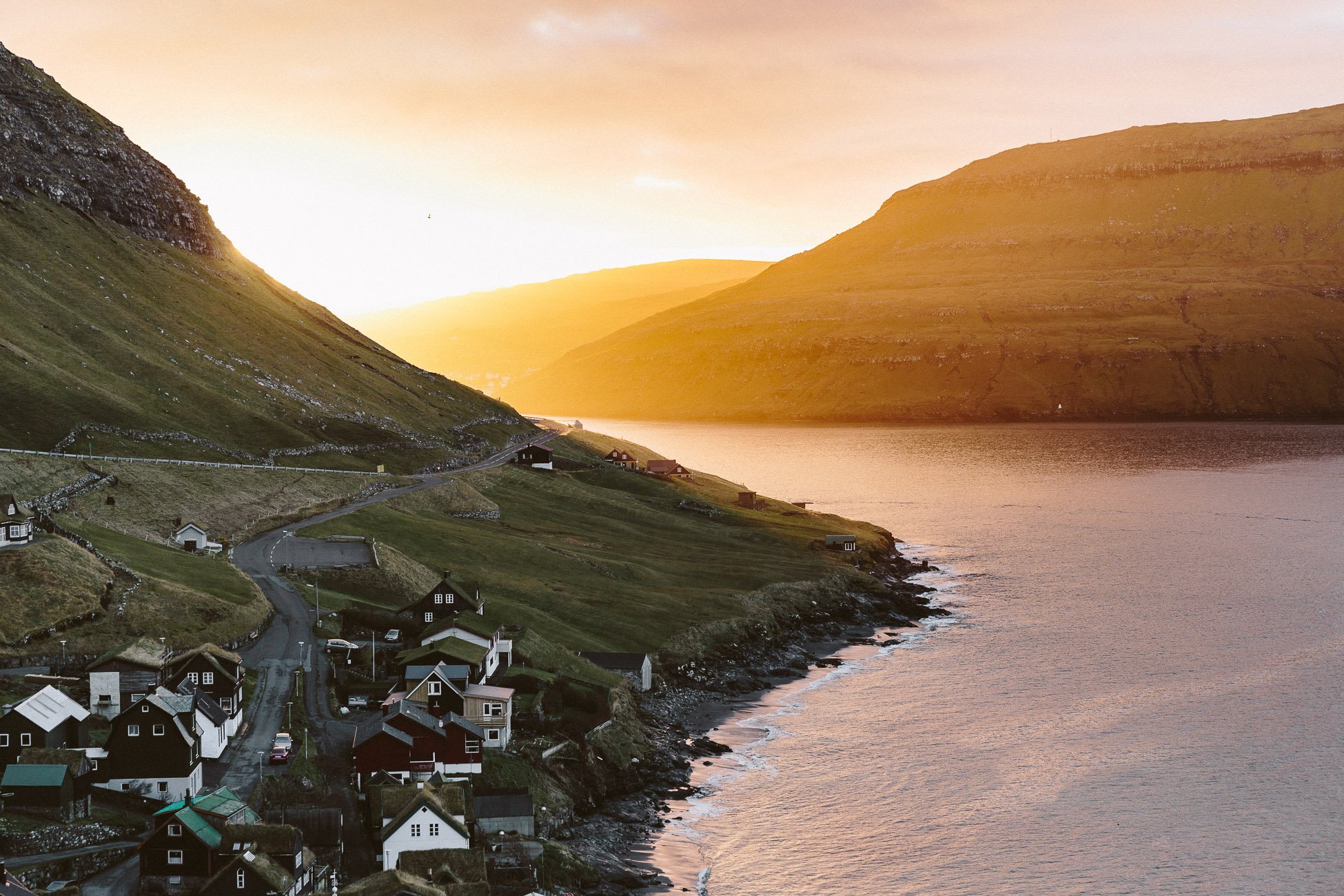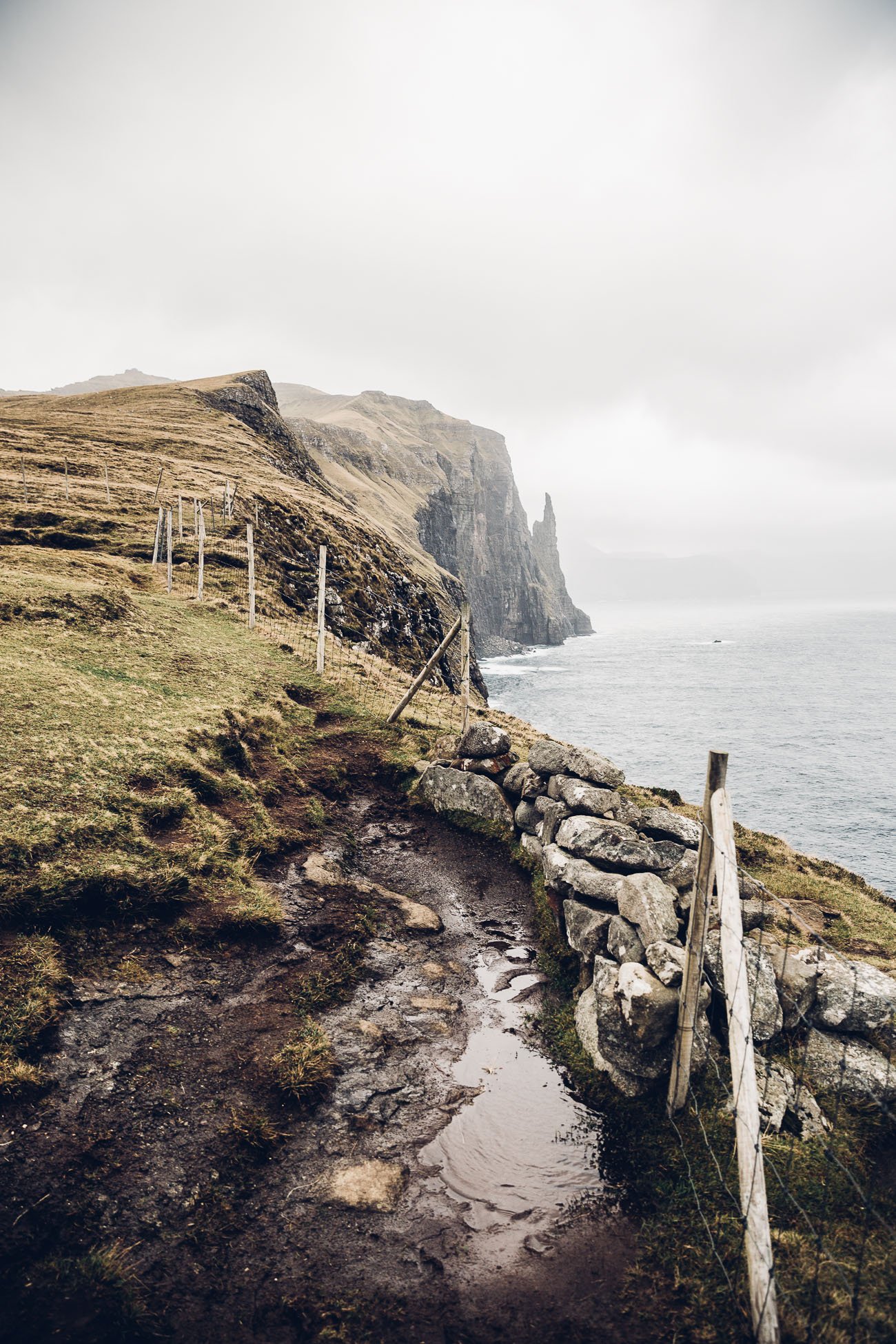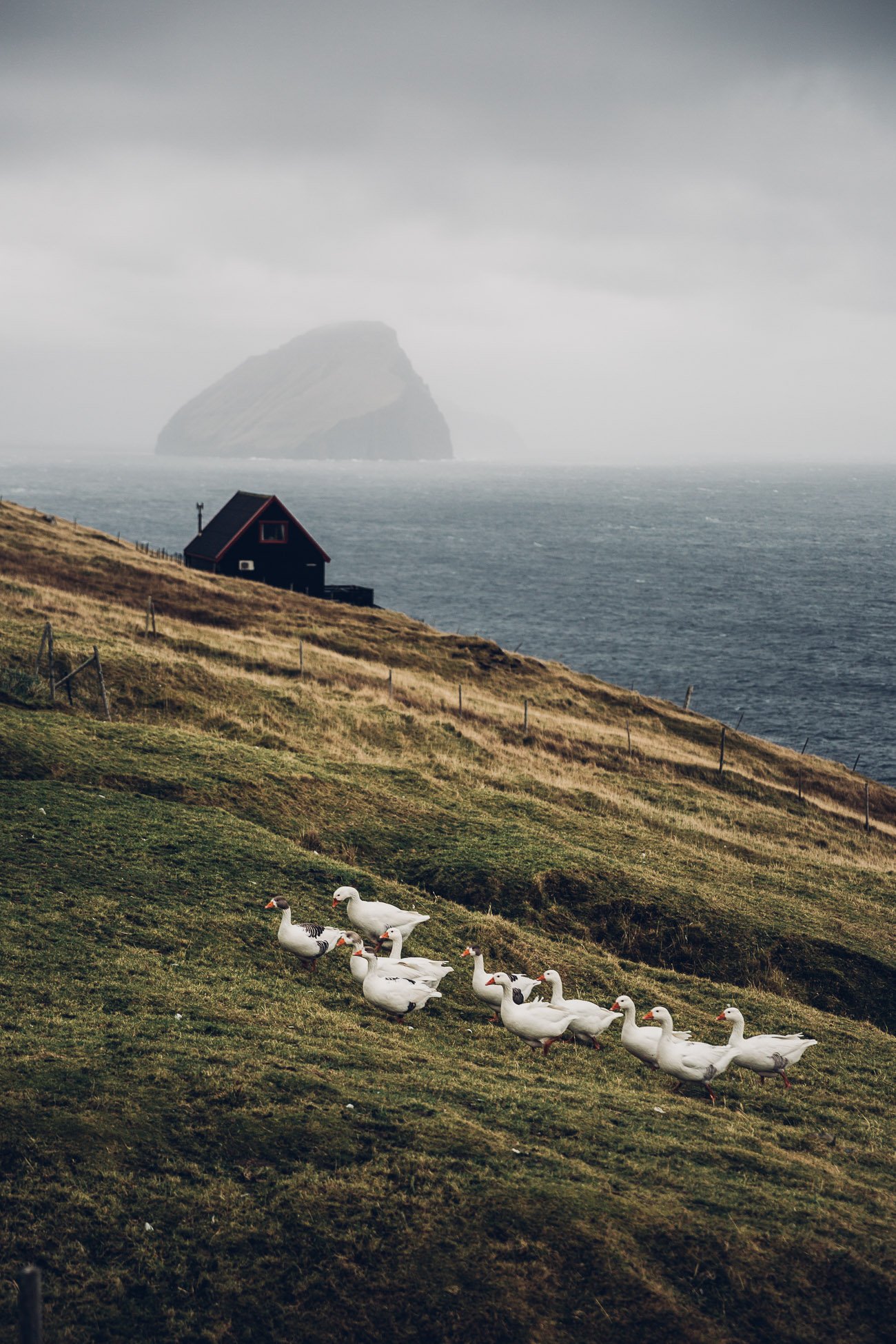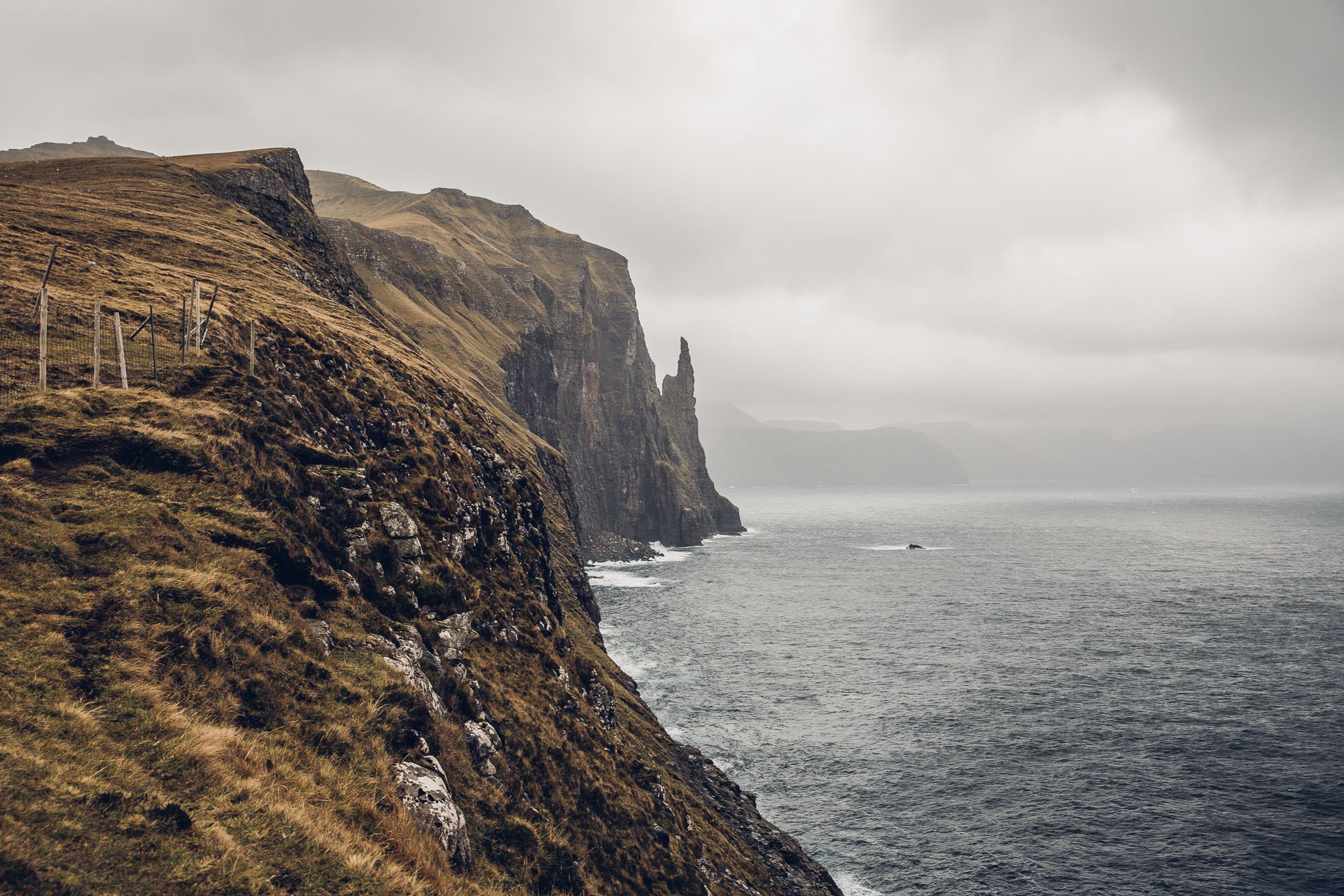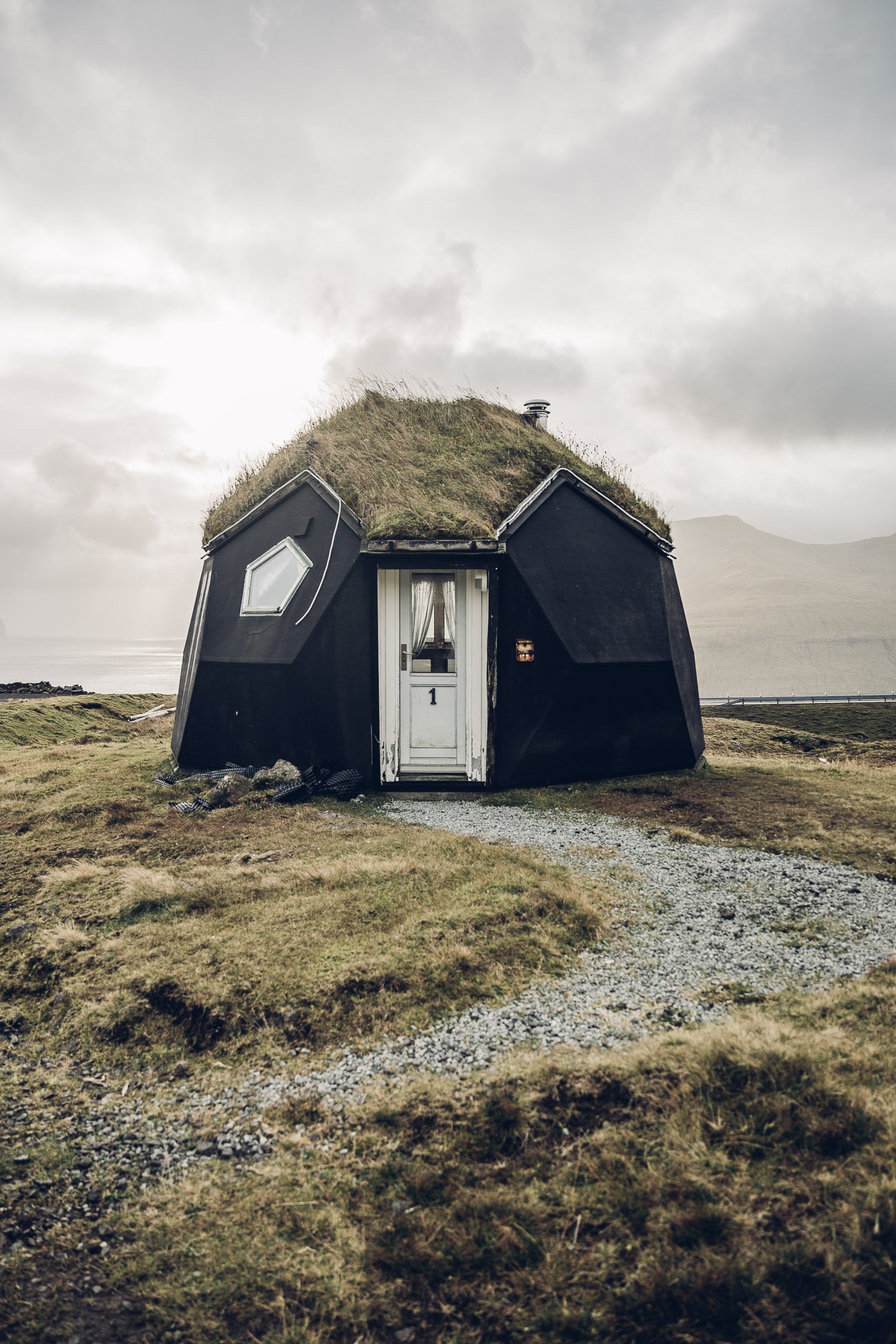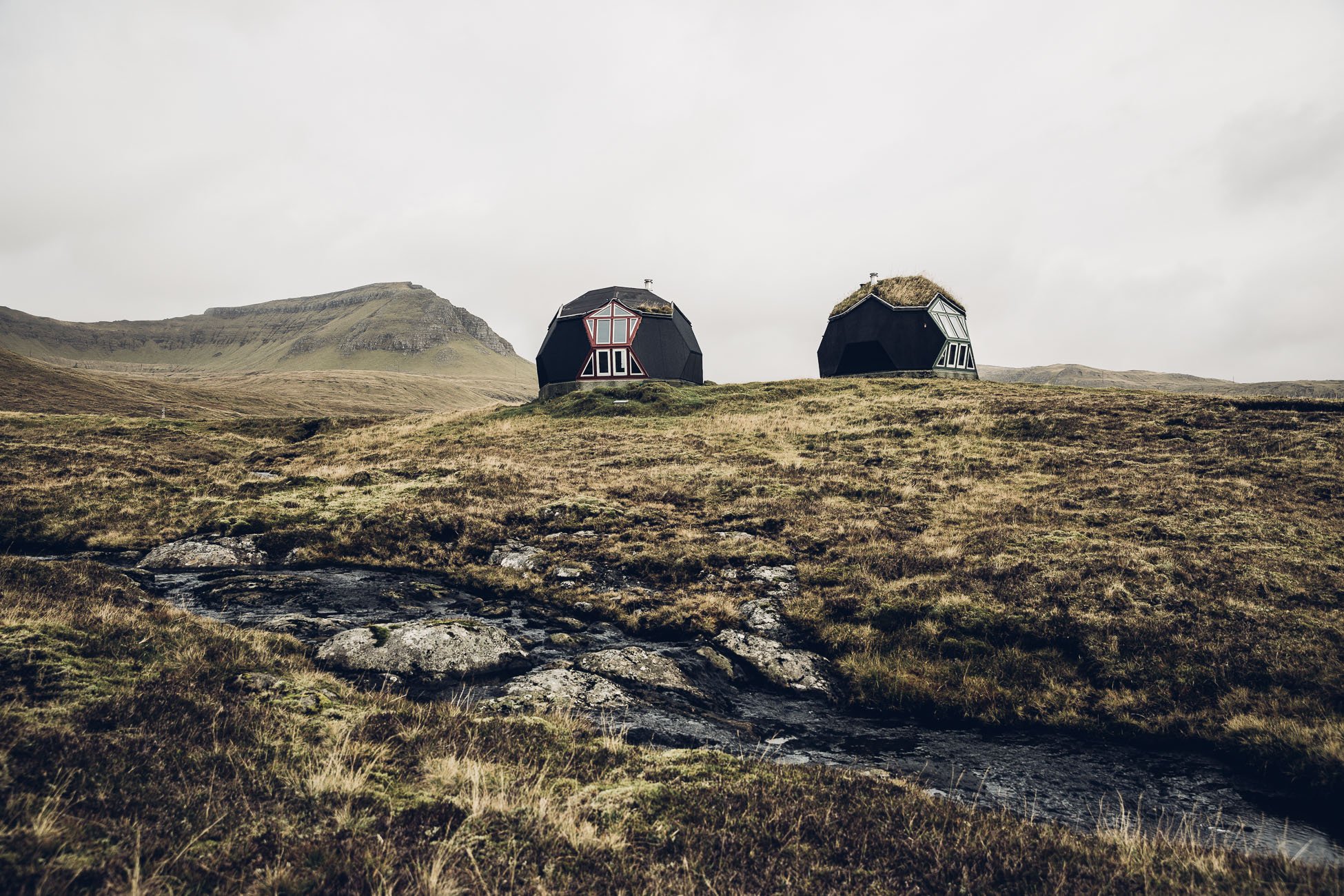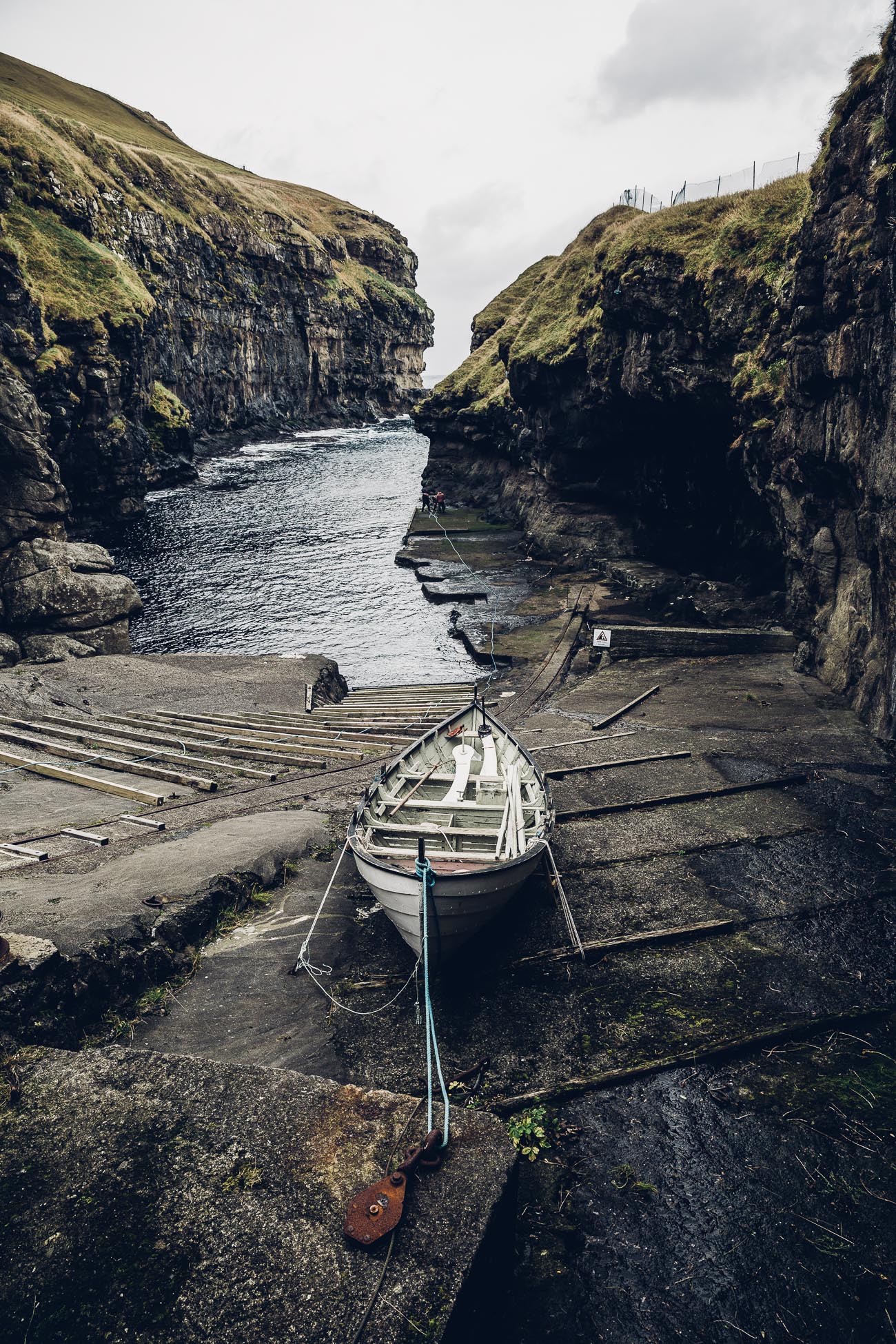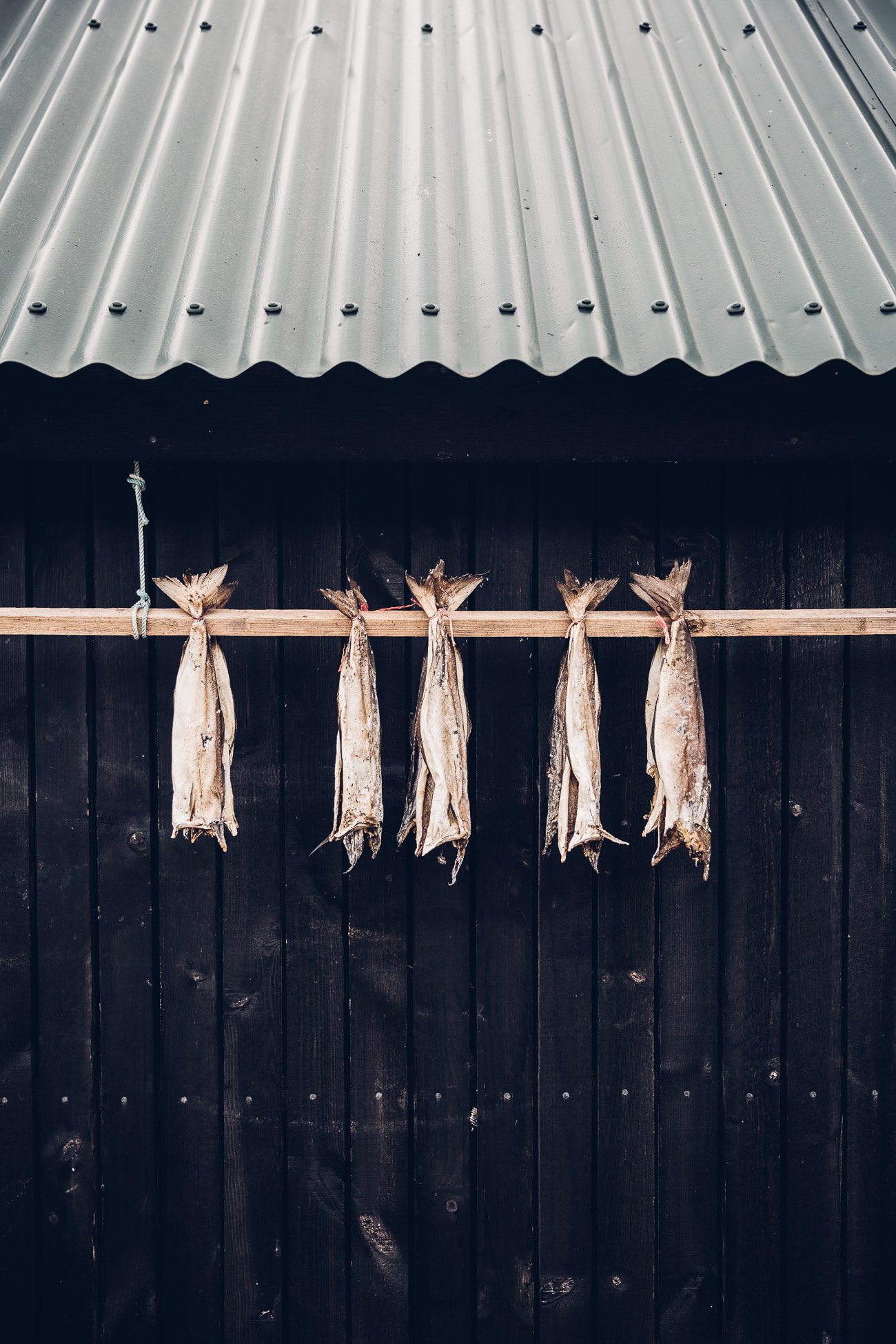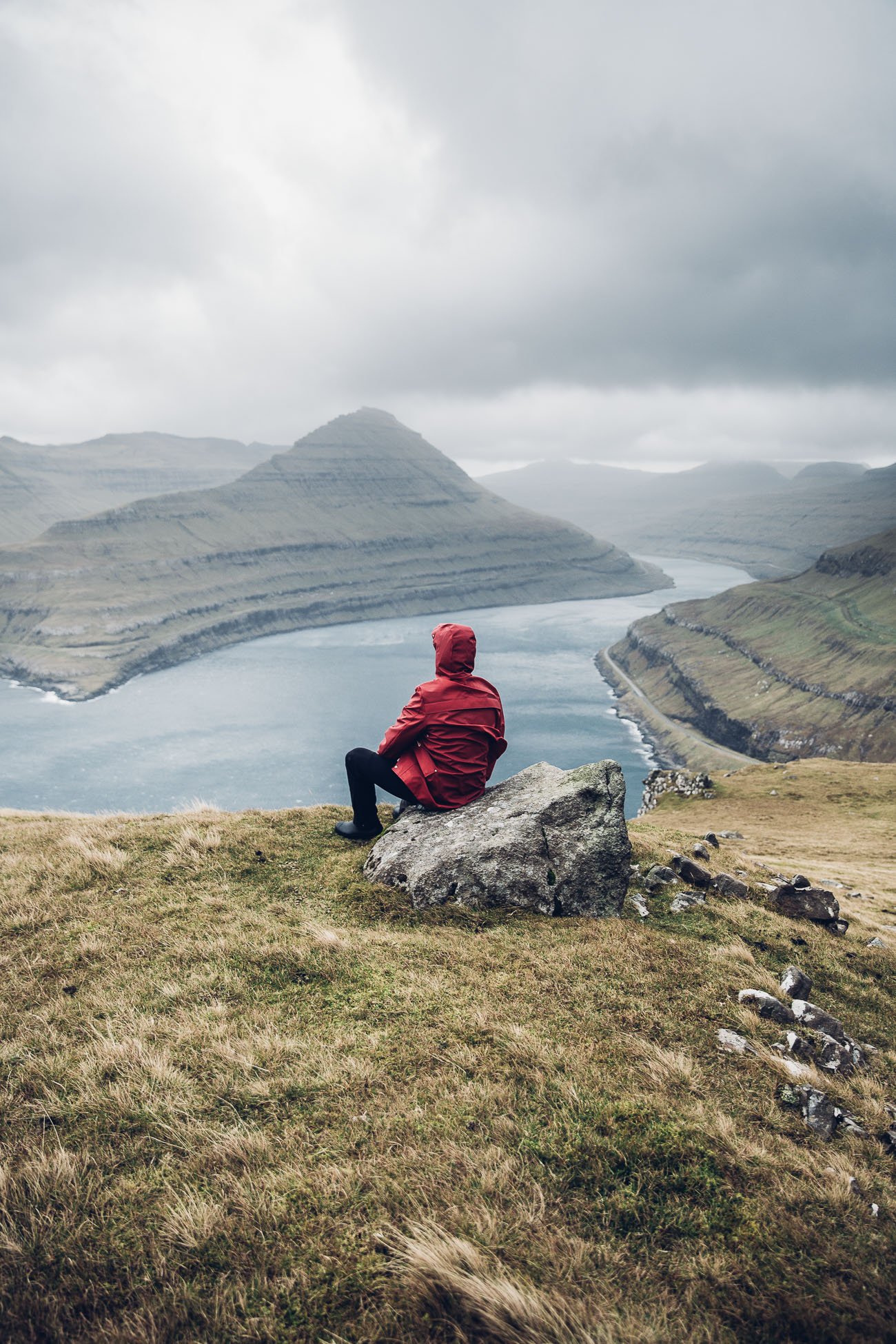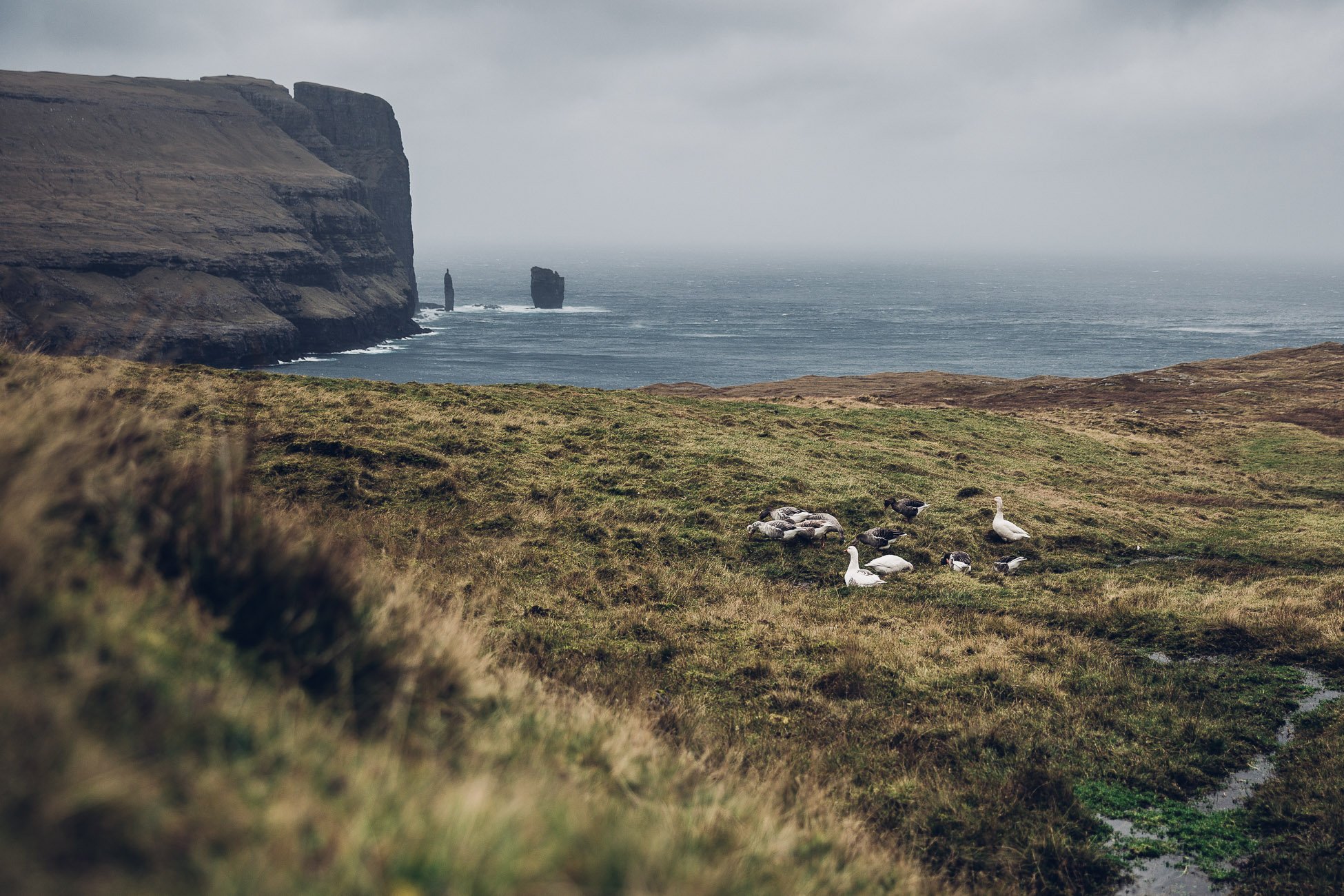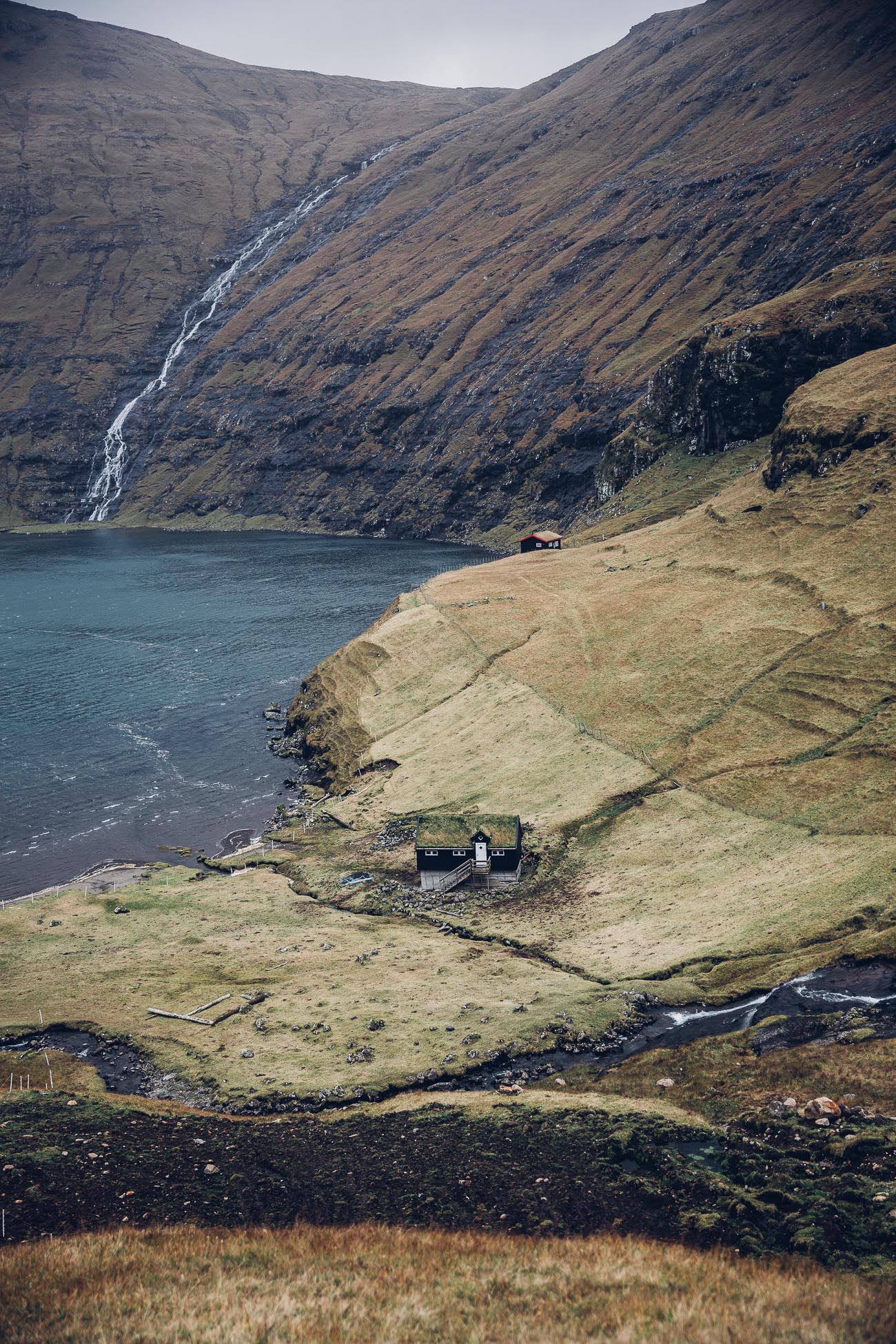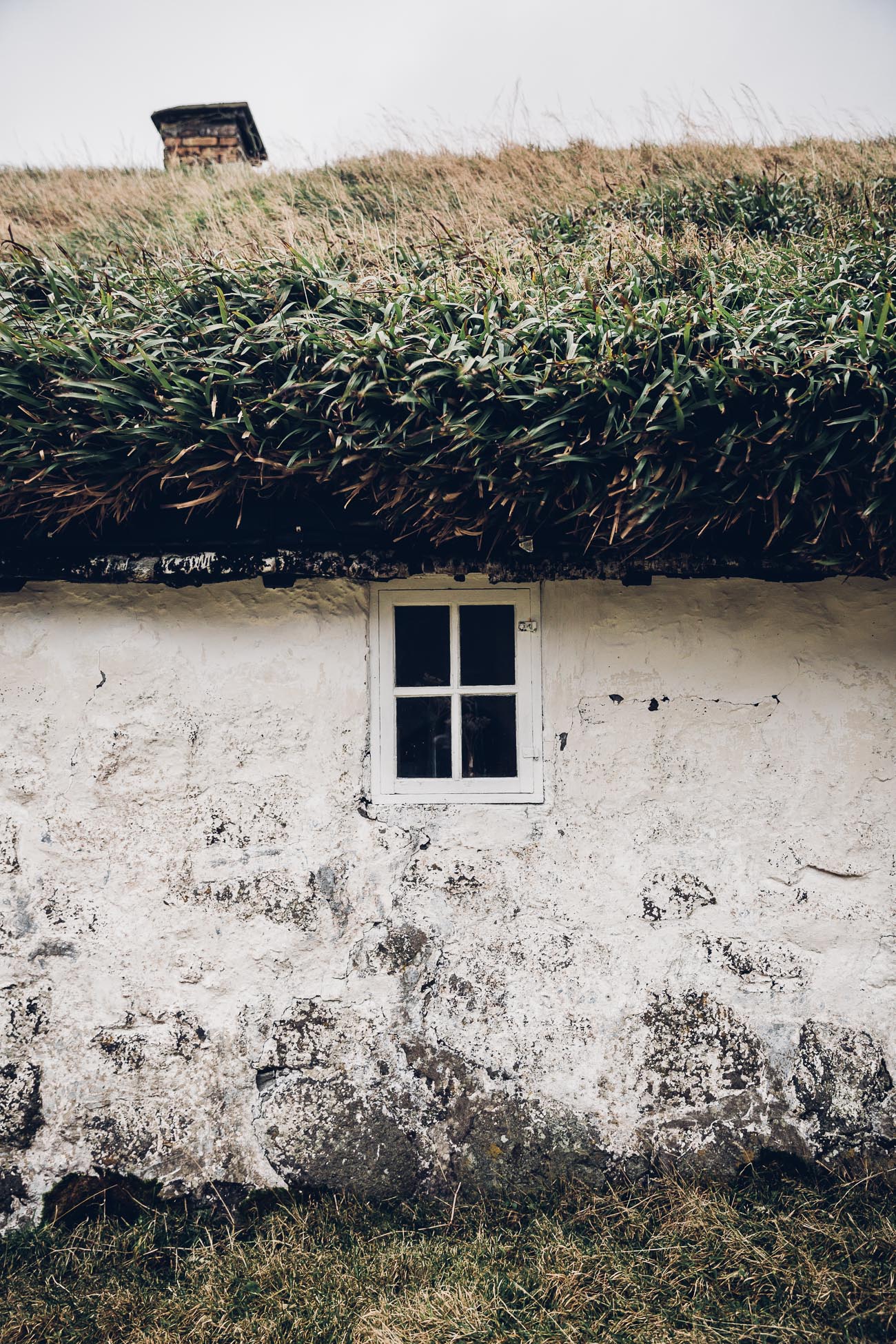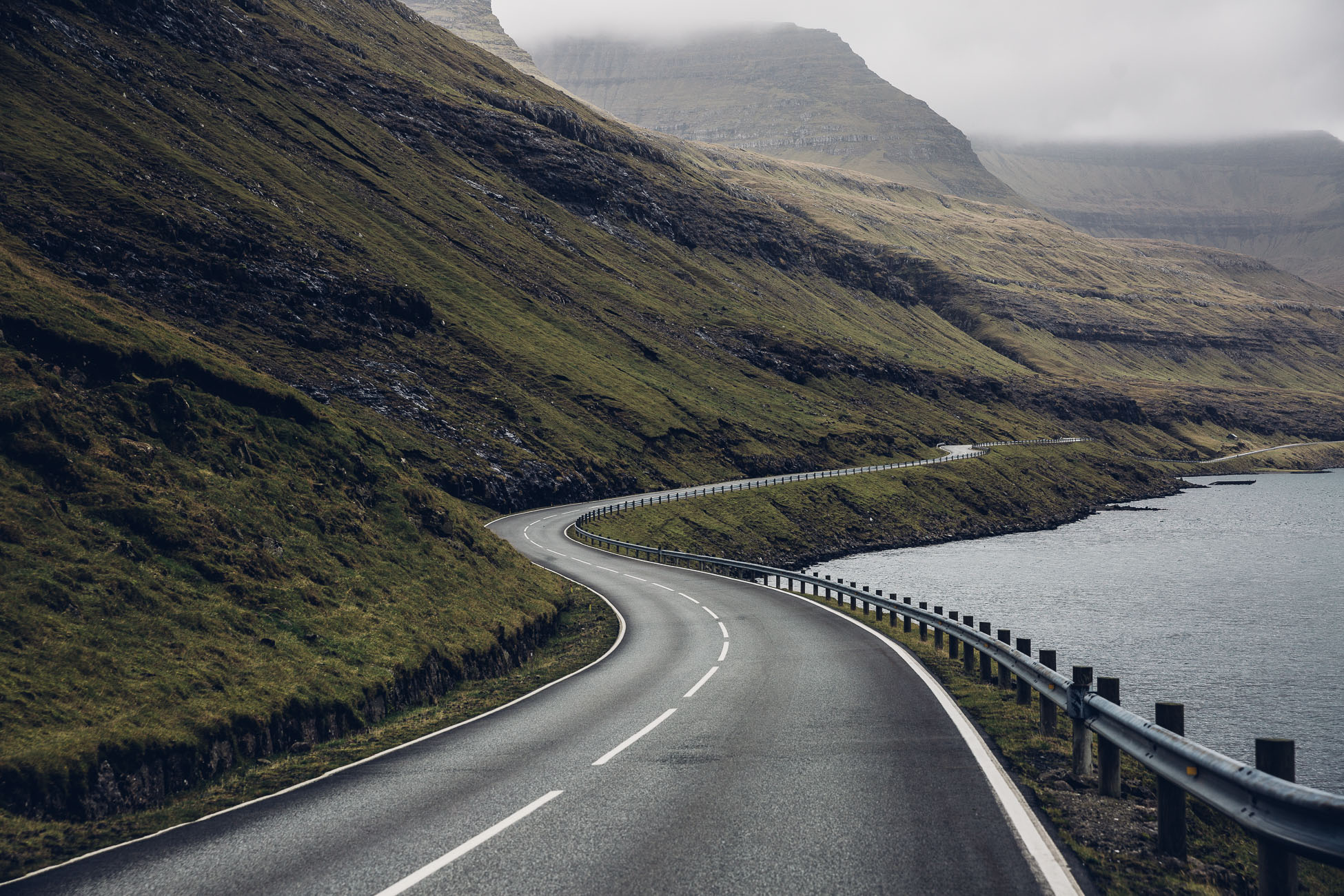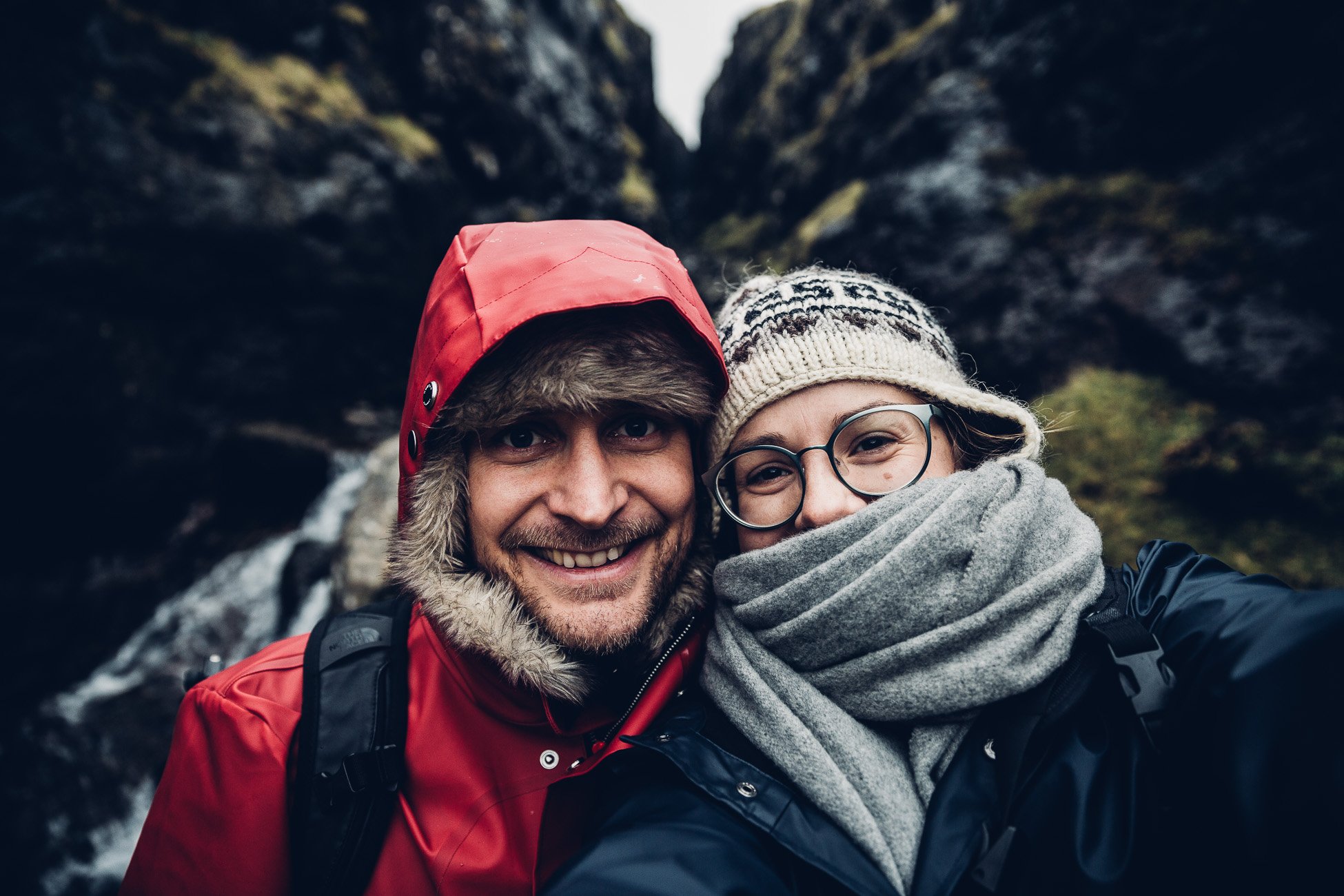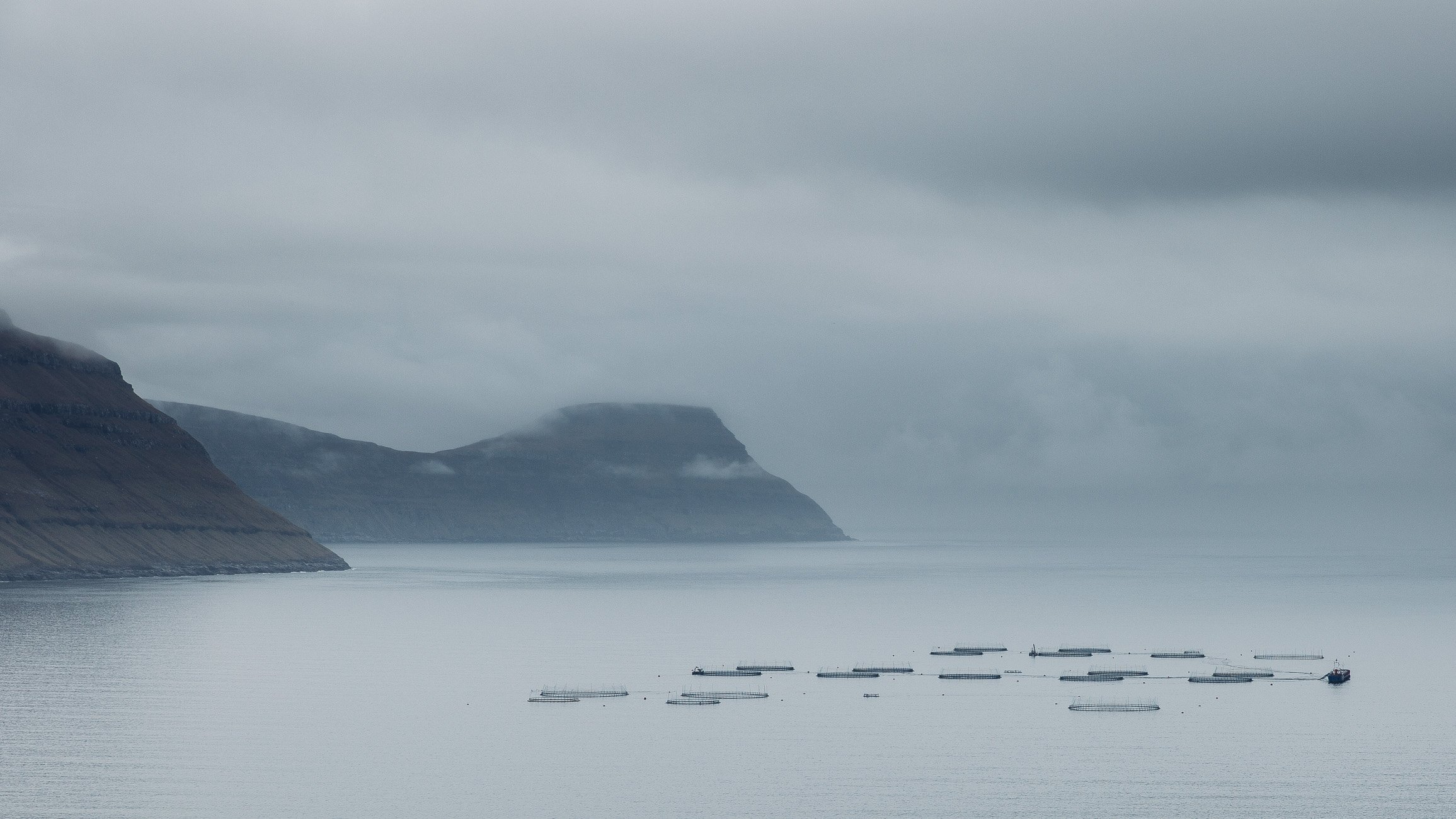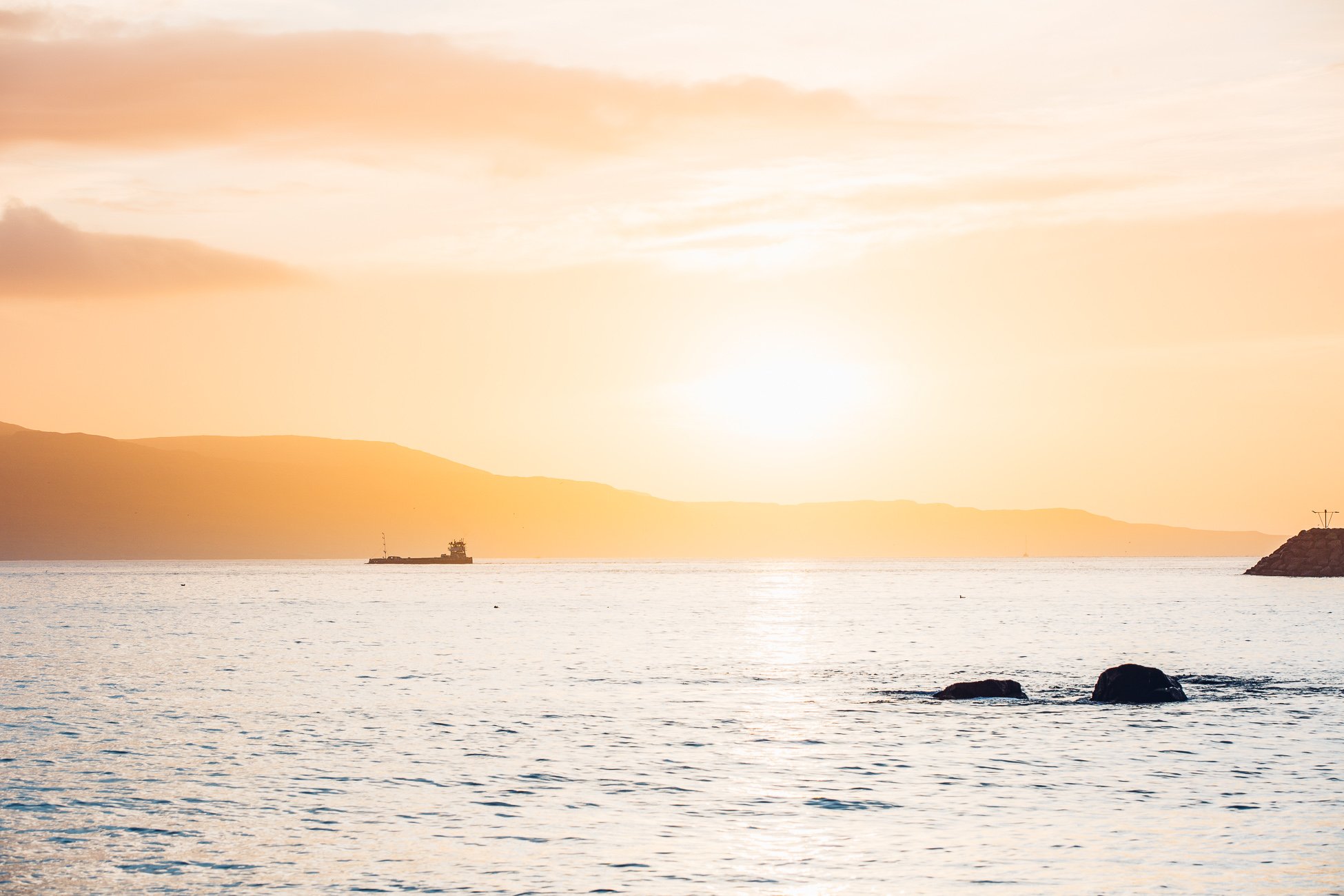Wild, windy, undiscovered. The 18 islets of the Faroe Islands are located halfway between Norway and Iceland – and while Iceland has become more and more overcrowded by tourists, the Faroe Islands are still rather untouched. Be quick to visit – this might change soon!
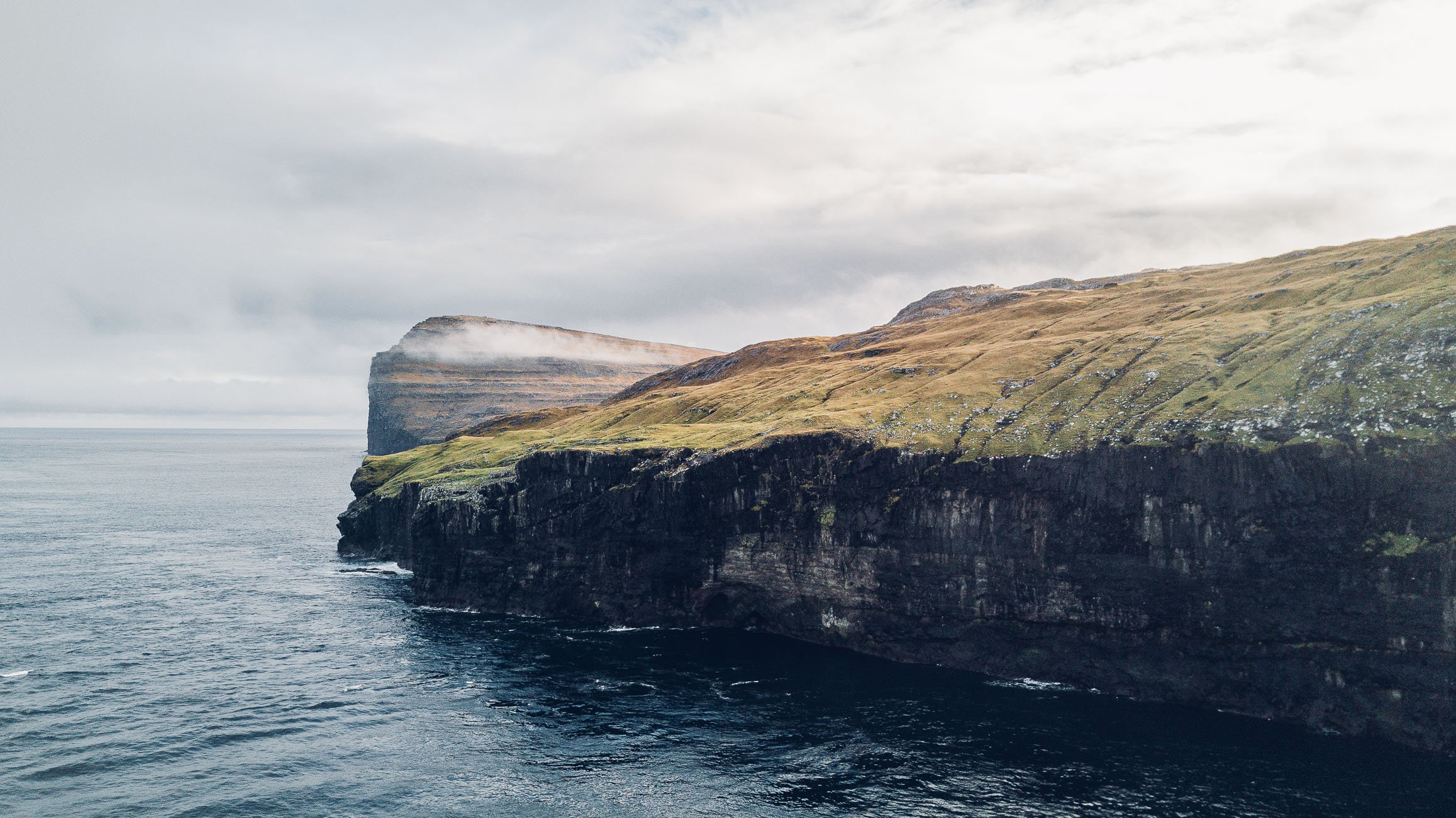 In October the “high season” is over and the colours of the Faroese landscape are more colourful than ever.
In October the “high season” is over and the colours of the Faroese landscape are more colourful than ever.
First impressions
When the plane finally cuts through the clouds and descends upon the Faroe Islands you won’t believe your eyes. The landing strip is literally squeezed into one of the bays and you’ll directly (and very closely) fly by steep cliffs, waterfalls and small cabins. Welcome to the Faroe Islands! (We were sitting in the plane with dropped jaws staring out of the window…) 🙂
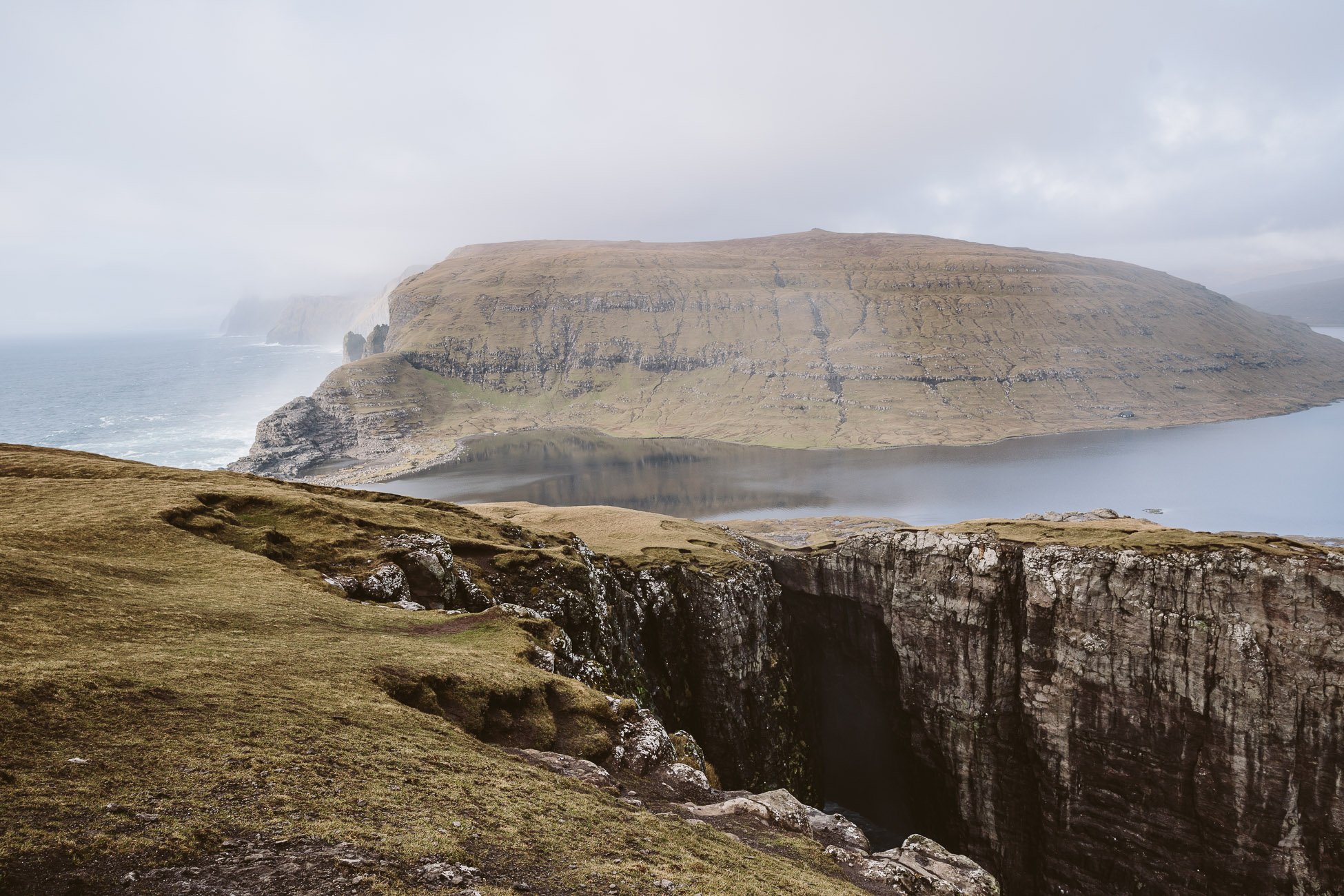 These are the first impressions you’ll get when arriving at Vágar airport!
These are the first impressions you’ll get when arriving at Vágar airport!
How to get to the Faroe Islands
The easiest way is to take a plane from Copenhagen to Vágar Airport. There are great direct connections between Copenhagen and the Faroe Islands by either Atlantic Airways or SAS (roundtrips start at 175 Euros).
The Faroe Islands are part of Denmark, but remain independent in many ways. They have their own government, currency and aren’t part of the EU. But as a EU citizen you still don’t need a Visa for a visit of the Faroes. We would recommend to combine a visit of the Faroe Islands with a Copenhagen city trip, this way you’ll get the best of both worlds.
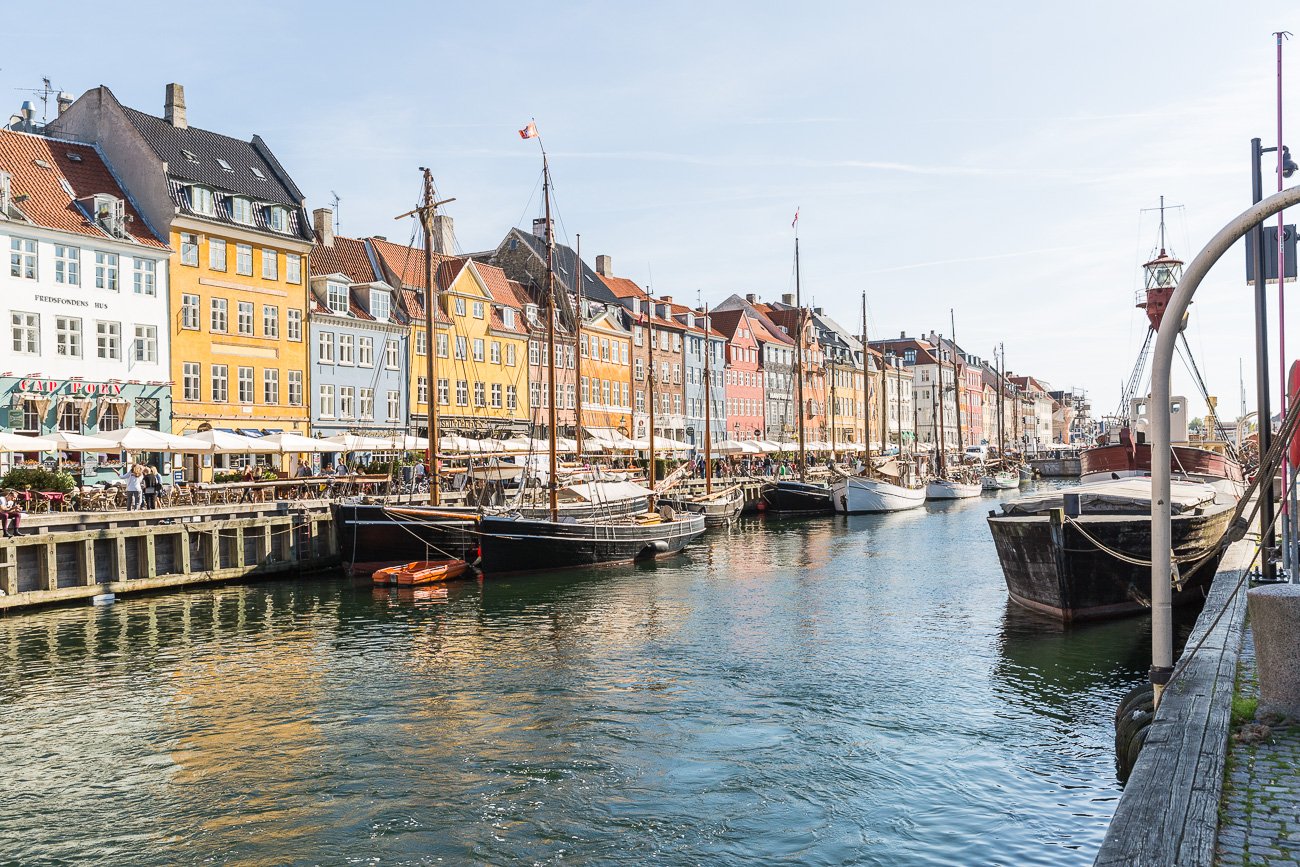 A stay in Copenhagen for a few days is the perfect gateway to an adventure of the Faroe Islands.
A stay in Copenhagen for a few days is the perfect gateway to an adventure of the Faroe Islands.
Where to stay
Most visitors stay on one of the 3 westernmost (and biggest) islands: Vágar, Streymoy or Eysturoy. Those are also the islands that are well connected to each other by proper tunnels (with more than one lane) 🙂 The further East or South you want to travel the less developed the islands are and the harder it is to get there (think helicopters or ferries, some have one-lane tunnels).
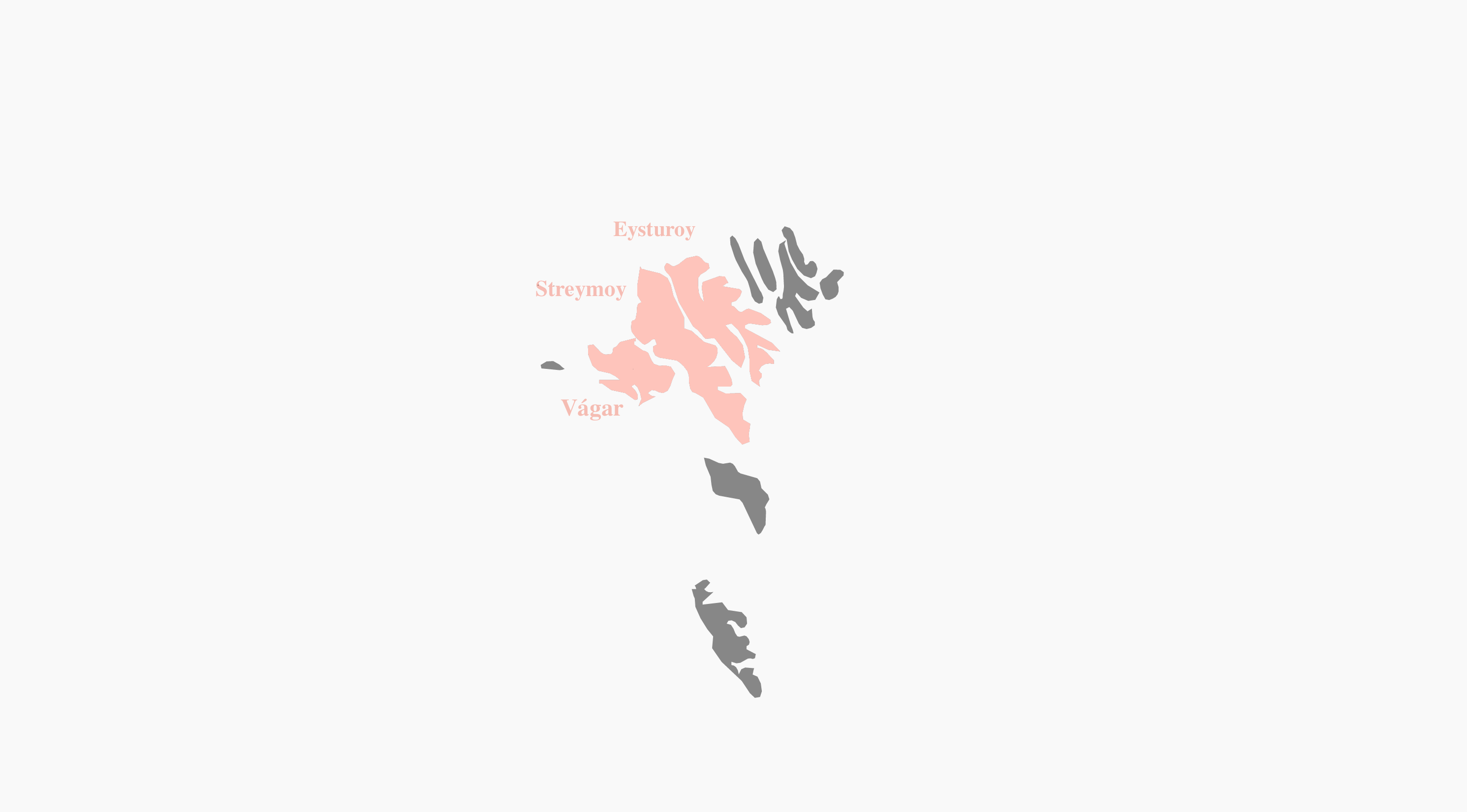 This map shows you the 3 main islands, which have most of the infrastructure of the Faroe Islands.
This map shows you the 3 main islands, which have most of the infrastructure of the Faroe Islands.
Streymoy island – the heart of the Faroe Islands
We recommend to stay on Streymoy island – this way you’re located somewhat in the center of the Faroe Islands. This is also where the capital of the Faroe Islands – Tórshavn – is located.
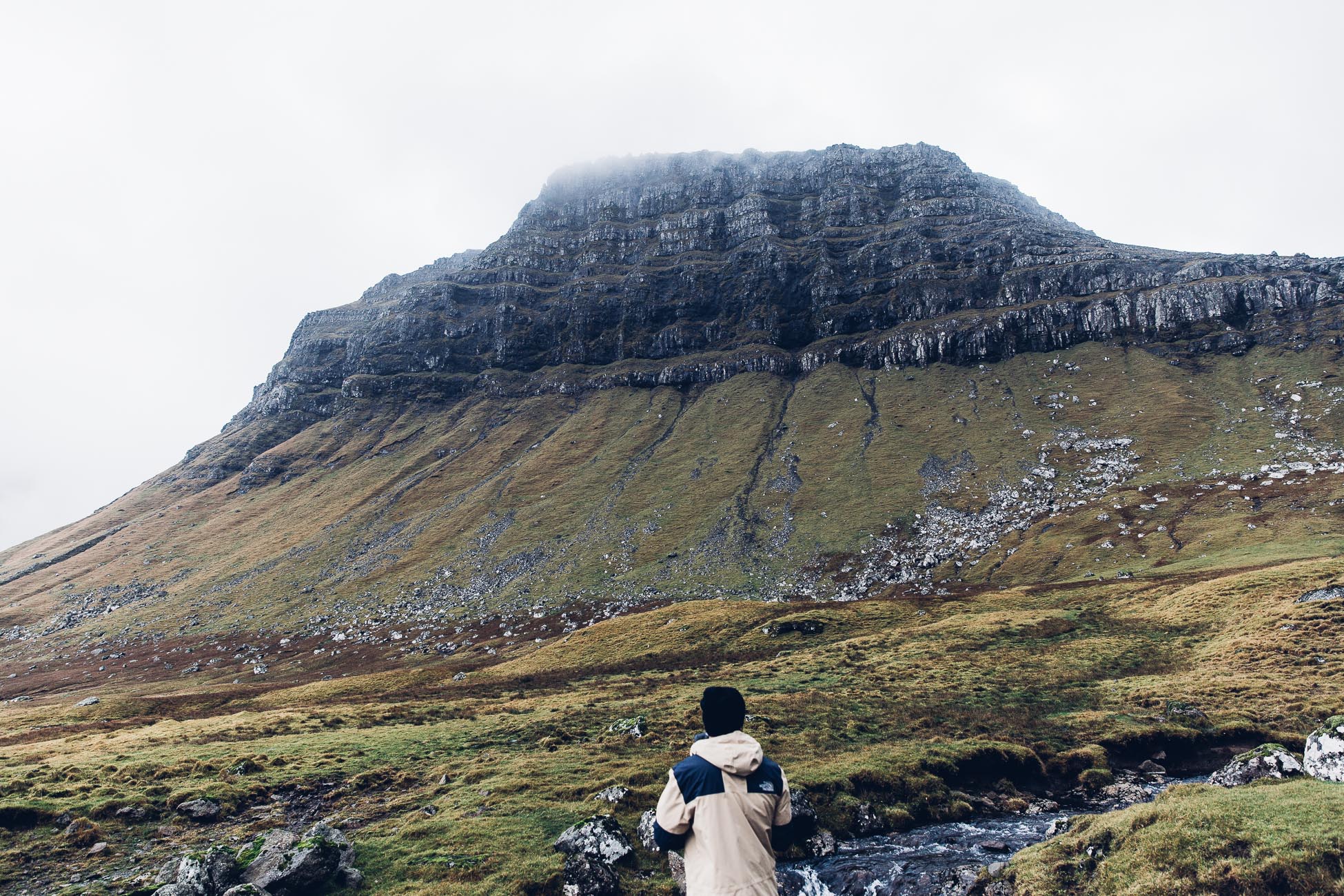 When we arrived in Tórshavn we decided to drive around the coastline a bit to gather some first impressions.
When we arrived in Tórshavn we decided to drive around the coastline a bit to gather some first impressions.
And well, let’s say we were immediately quite impressed!
From Streymoy you’re still close enough to Vágar with the airport (45 minute drive from Tórshavn) and also the incredible Sørvágsvatn lake and the Mulafossur Waterfall. These are the two main highlights of Vágar, which you won’t want to miss during your first visit of the Faroe Islands! At the same time you’re also in driving distance to the islands in the East, where we definitely recommend to go as well.
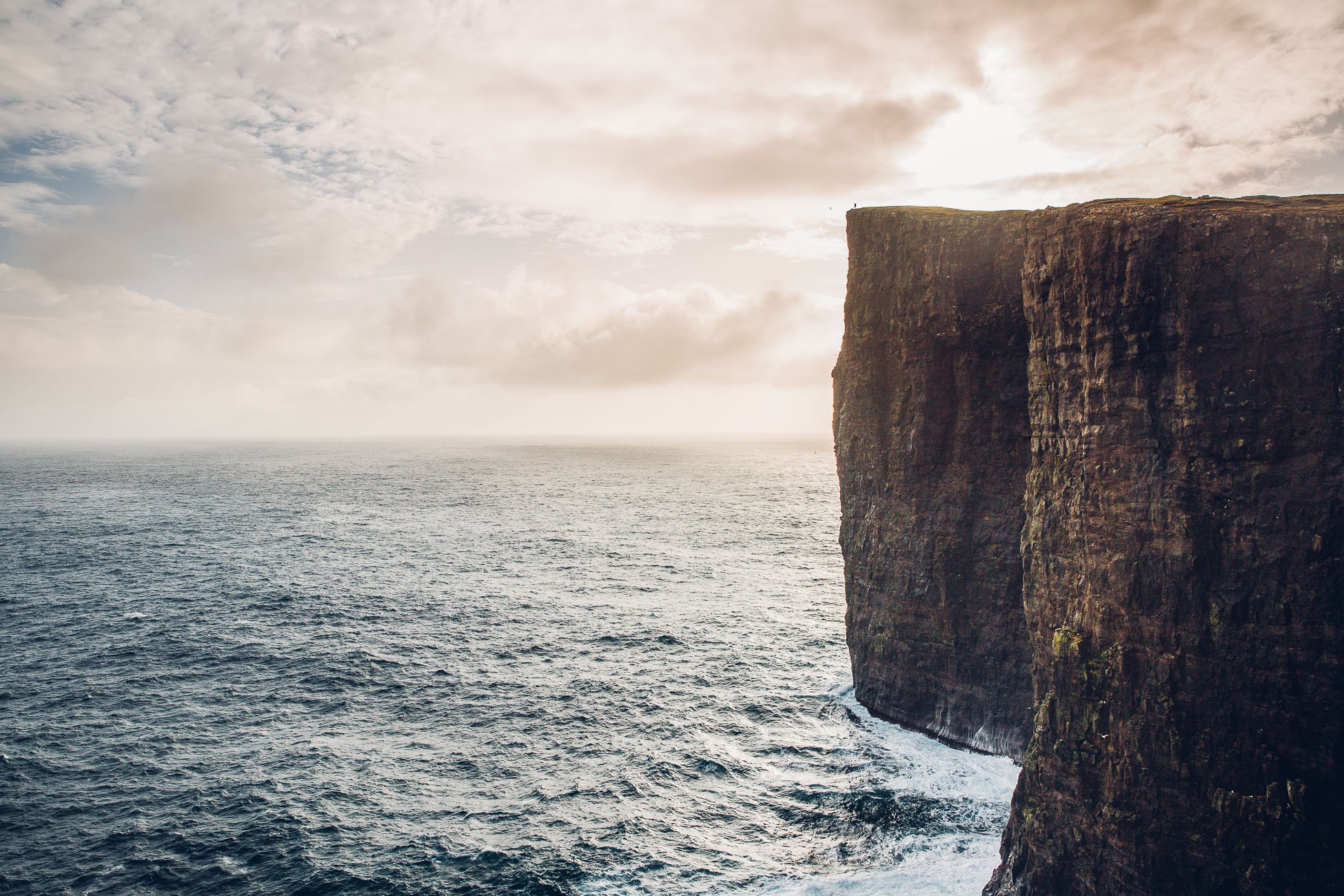 The famous cliffs at Trælanípa aren’t far from Streymoy island and can be visited during a half day excursion easily.
The famous cliffs at Trælanípa aren’t far from Streymoy island and can be visited during a half day excursion easily.
Cottage vs. hotel
The Faroe Islands have a couple of hotels, but we would recommend to stay in a cottage or cabin! There’s a multitude of great listings on Airbnb, but also independent homestays. The hotel prices are rather steep in the Faroe Islands, while you still won’t get a lot more service than in the cottages. For a more original feeling of the islands a cottage doesn’t get any better!
Here’s a list of companies that offer cabins, cottages, houses and apartments for rent:
- 62N: https://www.62n.fo/travel/en/accommodation/summerhouses-apartments/
- Greengate: https://www.greengate.fo/en/accommodation/summerhouse-apartments/
- Make Travel: https://www.make.fo/en/where-to-stay/houses-and-apartments/
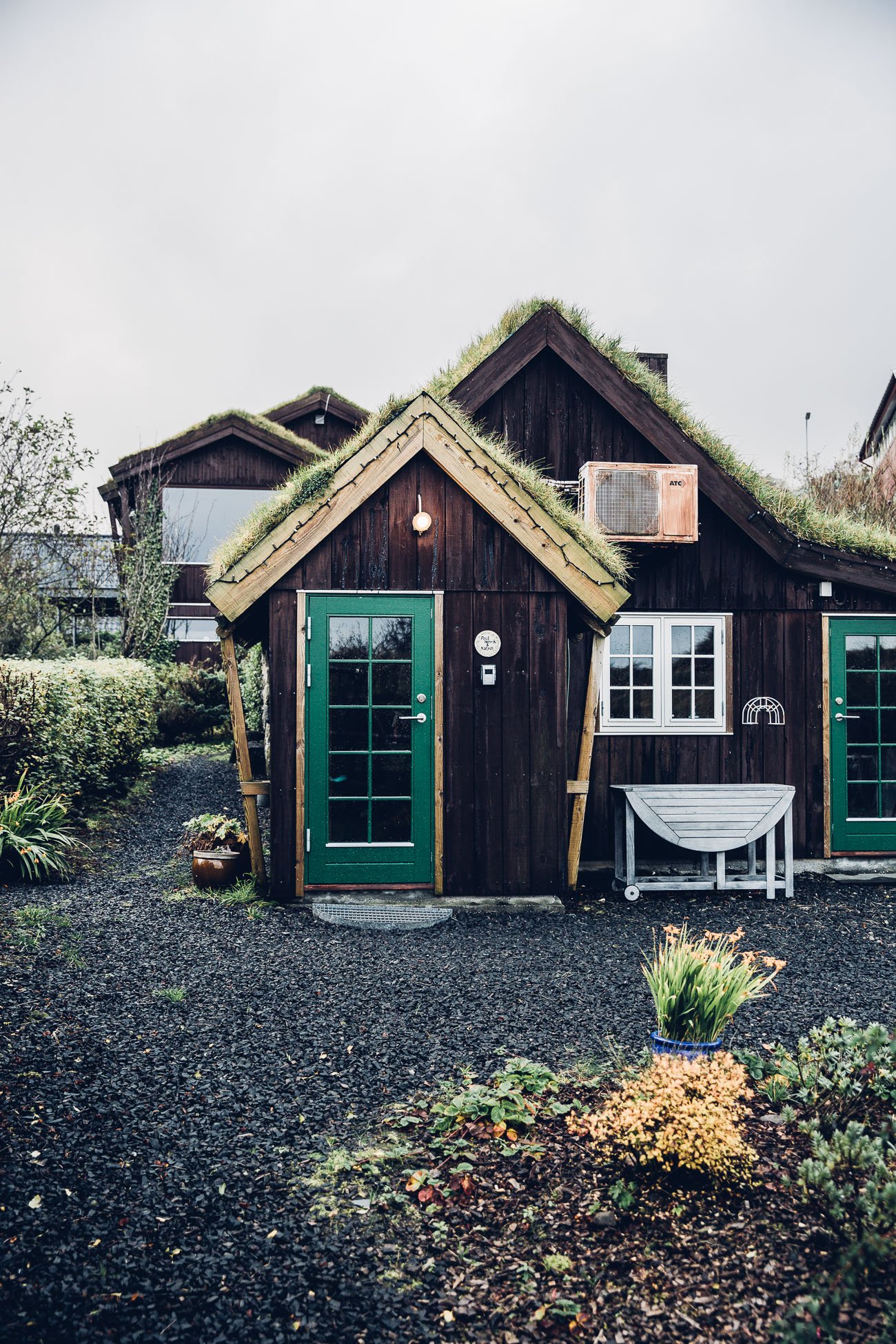
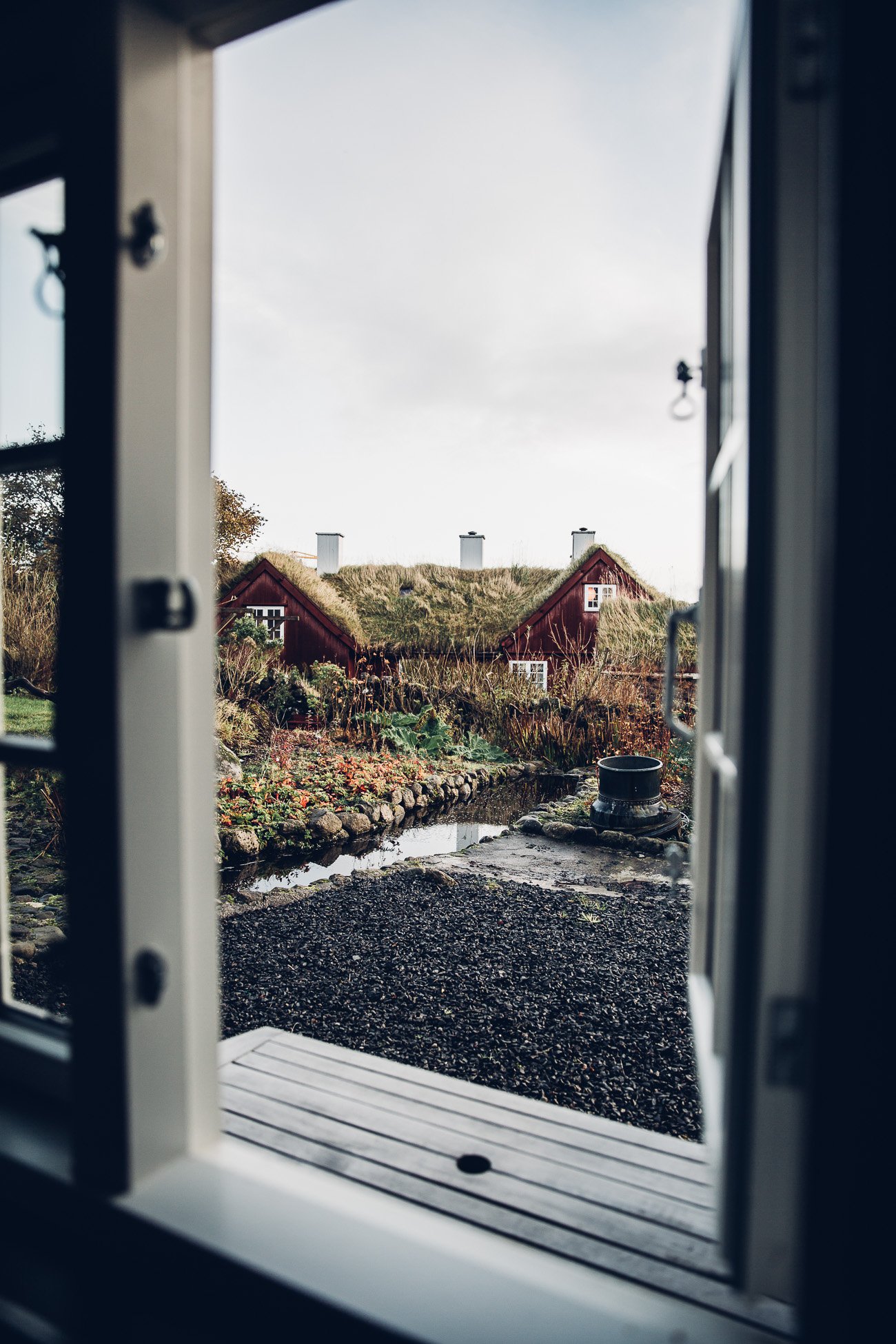
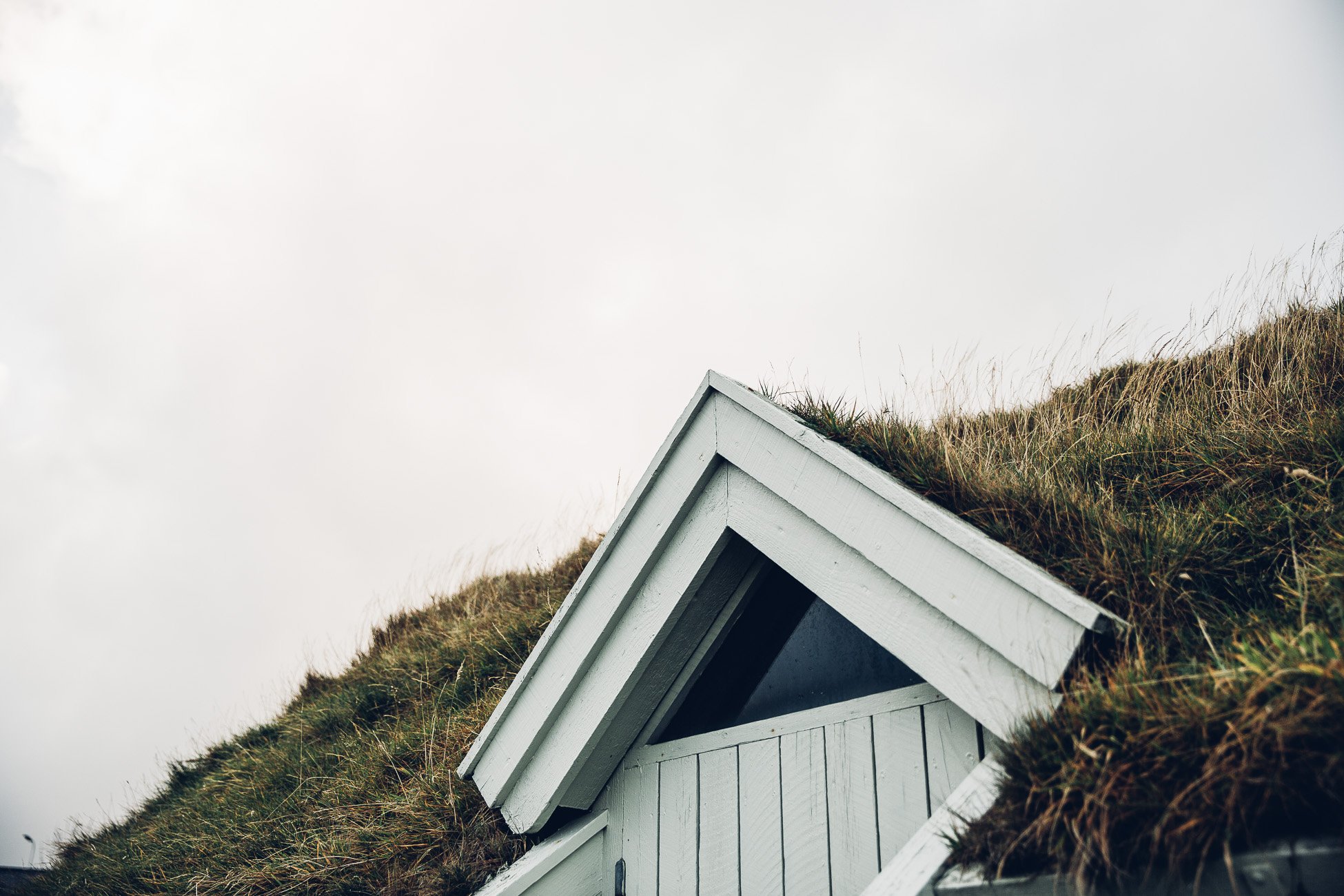 Our tiny cottage in the yard of the private house of the gynaecologist of Tórshavn.
Our tiny cottage in the yard of the private house of the gynaecologist of Tórshavn.
She even baked fresh bread for us every other day!
Update 2020: The cottage is unfortunately not available for rent anymore.
We stayed in a cozy cottage in Tórshavn, located directly at the beach of the capital (Update 2020: this cottage is unfortunately not longer available for rent). While we wouldn’t have minded to stay a bit more remotely, being located in Tórshavn has the advantage of offering a couple of shops, restaurants and supermarkets closeby. And although it’s the capital it honestly still felt remote enough (Tórshavn only has 19.000 inhabitants).
How to get around
Here’s a bit of bad news: You’ll definitely need a car to get around the islands and rental cars aren’t cheap on the Faroe Islands. Think at least 40 Euros per day (for a small car). But the good news is: You don’t need a 4×4 or an SUV! Many visitors make that mistake, because they think that they’ll do a lot of offroad driving (like on Iceland). Street conditions are really good on the Faroe Islands and even remote parts can be easily reached – even with a small car.
 Most of the streets on the Faroe island are well constructed – so you won’t need a 4×4.
Most of the streets on the Faroe island are well constructed – so you won’t need a 4×4.
Faroe Islands Itinerary: What to see during one week
Before our first visit we did a ton of research and ended up with an itinerary way too full for one week! Although the Faroe Islands are rather small, there’s a lot to see and discover.
Tipp: Don’t try to see all the 18 islands in a week, but focus on the main 3 islands plus one or two additional islands, that are off the beaten path.
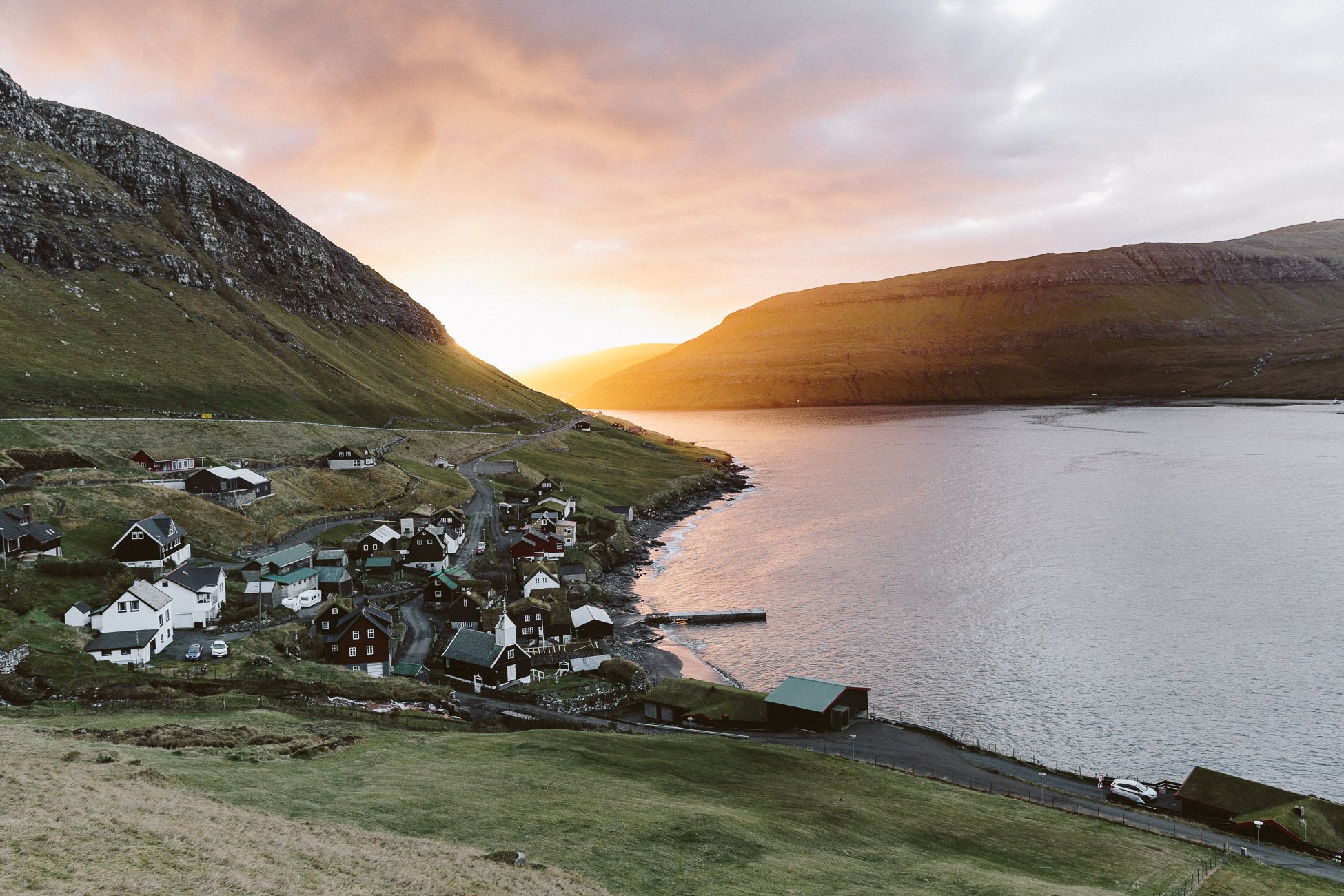 Although we got up at sunrise and filled every day with program items, we still didn’t see everything we had initially planned.
Although we got up at sunrise and filled every day with program items, we still didn’t see everything we had initially planned.
The weather factor
The weather is a constant factor during a visit of the Faroe Islands – sometimes you’ll have to change plans when rain makes a mountain range impassable for example. Hiking is a main activity on the Faroe Islands, but it’s obviously very weather dependent. When there’s too much rain some hikes become dangerous due to muddy patches and steep cliffs. We were lucky with the weather most of the days (although it was October), but also had to cancel one hike for safety reasons and couldn’t reach a location via helicopter as the heliport was closed.
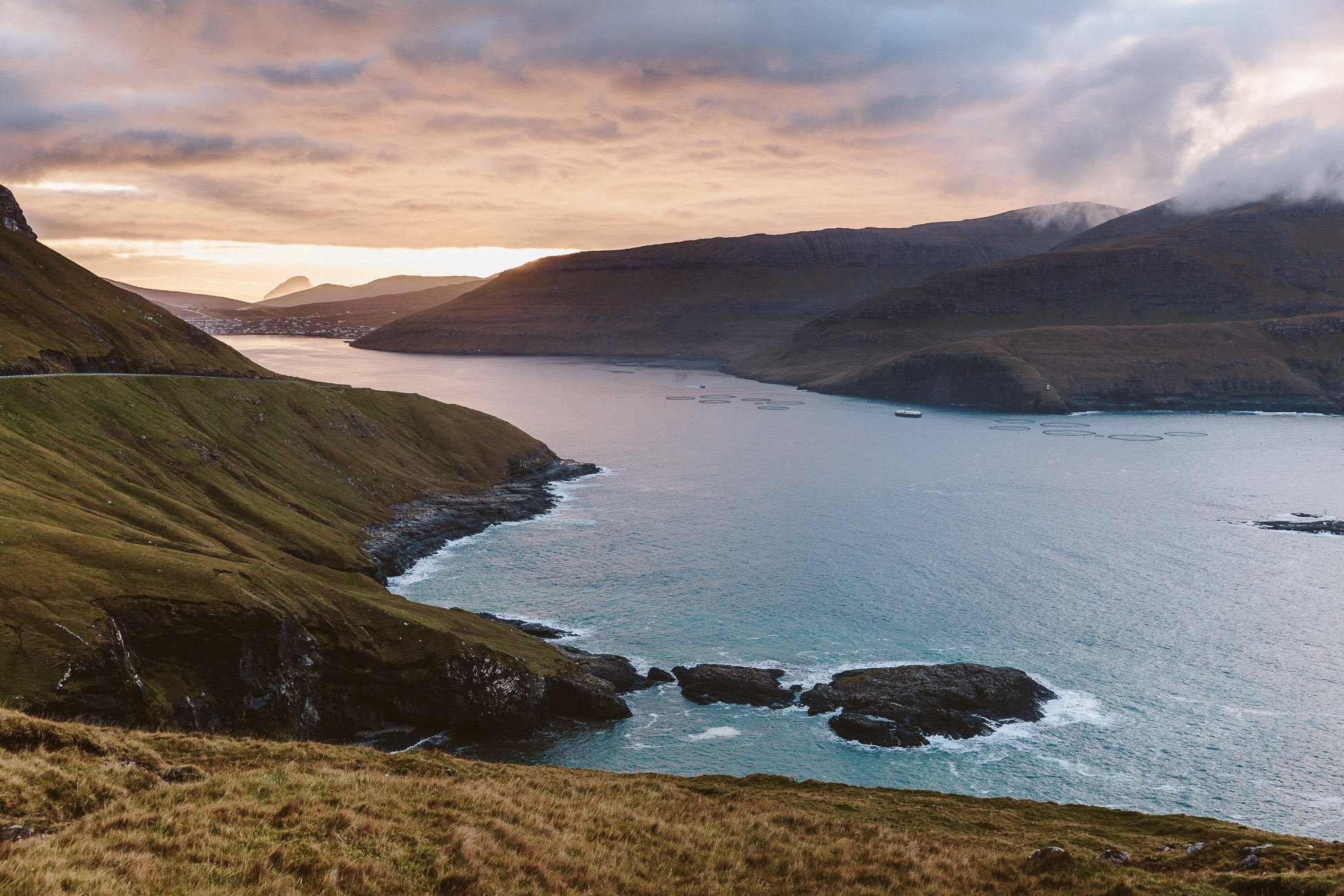 The weather can change quickly on the Faroe Islands – and so do the plans for hikes!
The weather can change quickly on the Faroe Islands – and so do the plans for hikes!
The Faroe Islands guide to each islet
Before we hand out our complete one week Faroe Islands itinerary let us give you an overview of the most important landmarks and experiences on each of the islands:
1. What to do on Vágar
There are 5 important things we would recommend to discover on Vágar – the westernmost of the three big islands (and the location of the airport). These 5 are:
- Hike along Sørvágsvatn to the famous cliff of Trælanípa
- Visit Bøur at sunrise
- Hike to Gasadalur with the famous Mulafossur Waterfall
- Try to either hike over to the viewpoint of the famous Drangarnir island or take a boat there
- If visiting in the main season take a boat to Mykines to watch birds (like puffins!)
You’ll need at least half a day to a full day for each of the hikes, so make sure to plan enough days for your explorations of Vágar. If you have more time you can also add the hike towards the stone formation called “Trøllkonufingur” (the troll’s finger) to your To Do list – we went there and enjoyed the short hike with no other people around.
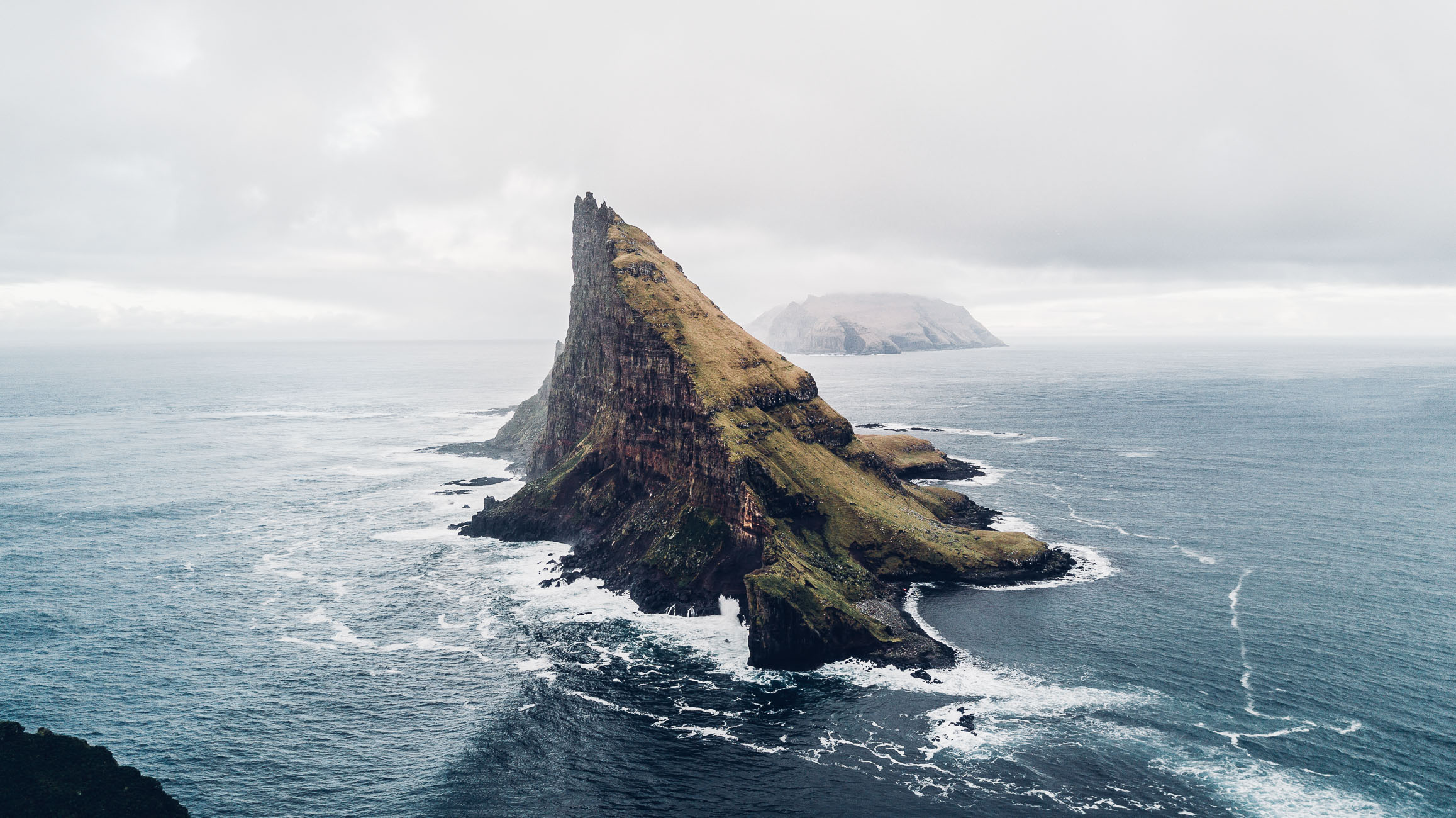 Drangarnir is this iconic island, that is quite hard to reach.
Drangarnir is this iconic island, that is quite hard to reach.
We had to cancel our hike to the viewpoint as it was too dangerous due to mudslides, but caught this view with our drone.
Tipp: The boat tours only operate during the high season in the summer months. In October we didn’t have the chance to take a boat to either Drangarnir or Mykines and we also couldn’t see any puffins. Those are the disadvantages of a visit outside of the main season. The advantage of the low season being that you’ll have most of the places to yourself and prices are generally lower. Also it’s more sustainable for a destination to distribute tourism over the seasons and we therefore generally support off-season traveling.
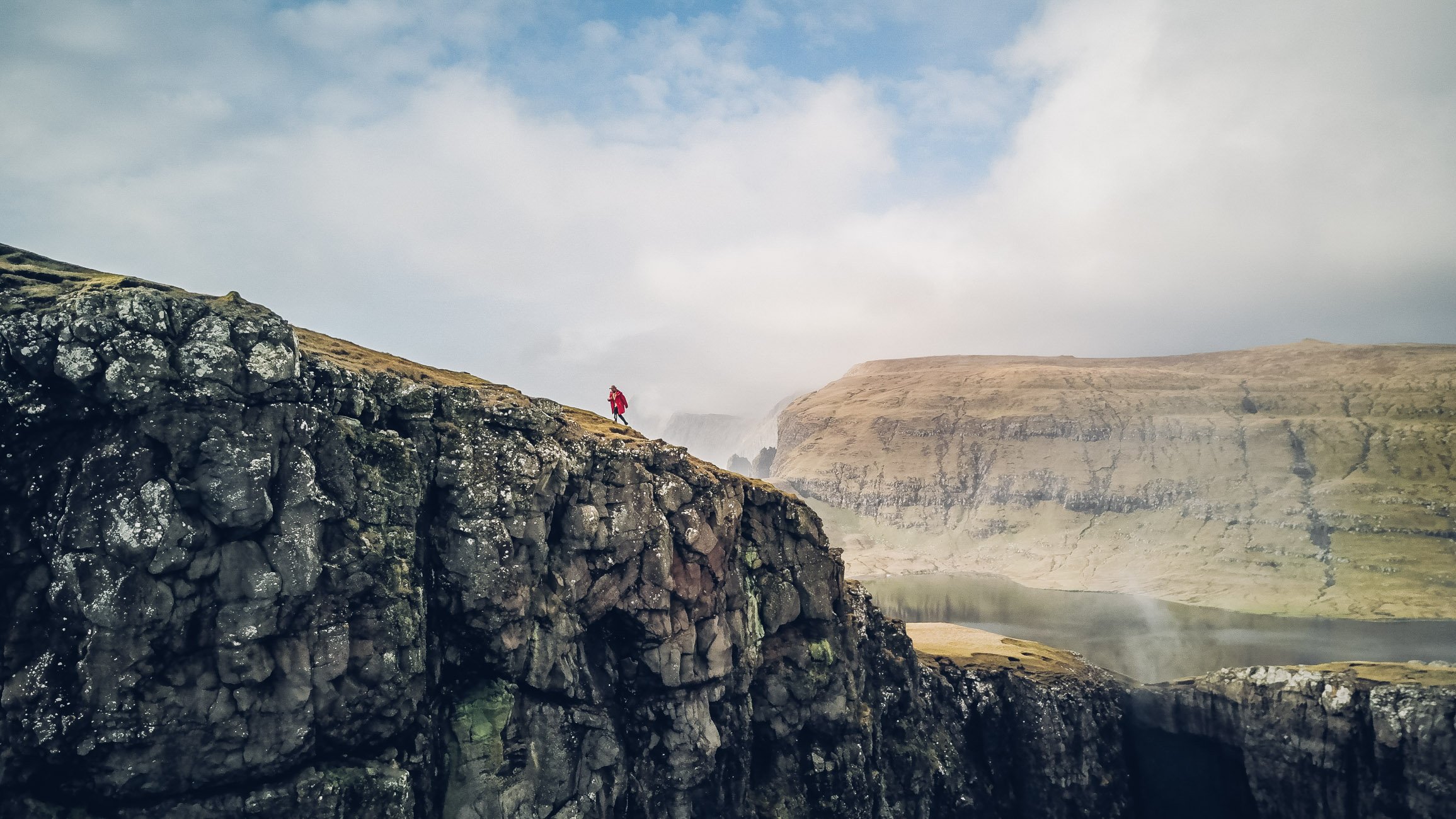 Off season visits allow for being alone at one of the most iconic locations (the famous Trælanípa cliff at Sørvágsvatn lake).
Off season visits allow for being alone at one of the most iconic locations (the famous Trælanípa cliff at Sørvágsvatn lake).
2. What to do on Streymoy
As most visitors stay on Streymoy this is also the main starting point for all the explorations. But you actually don’t have to venture out far, there’s a lot to see on the main island as well. Here are our Top 6 discoveries on Streymoy:
- Visit Saksun with it’s grass-covered houses at low tide to be able to walk all the way to the second, hidden bay
- Visit one of the highest waterfalls of the island which is conveniently located directly next to the street (Fossá Waterfall)
- Check out the coastal village of Tjørnuvík – you might be able to catch surfers here
- Visit the Igloos / dome houses close to Kvívík
- Check out the capital city of Tórshavn
- Watch the sunset at Norðradalur
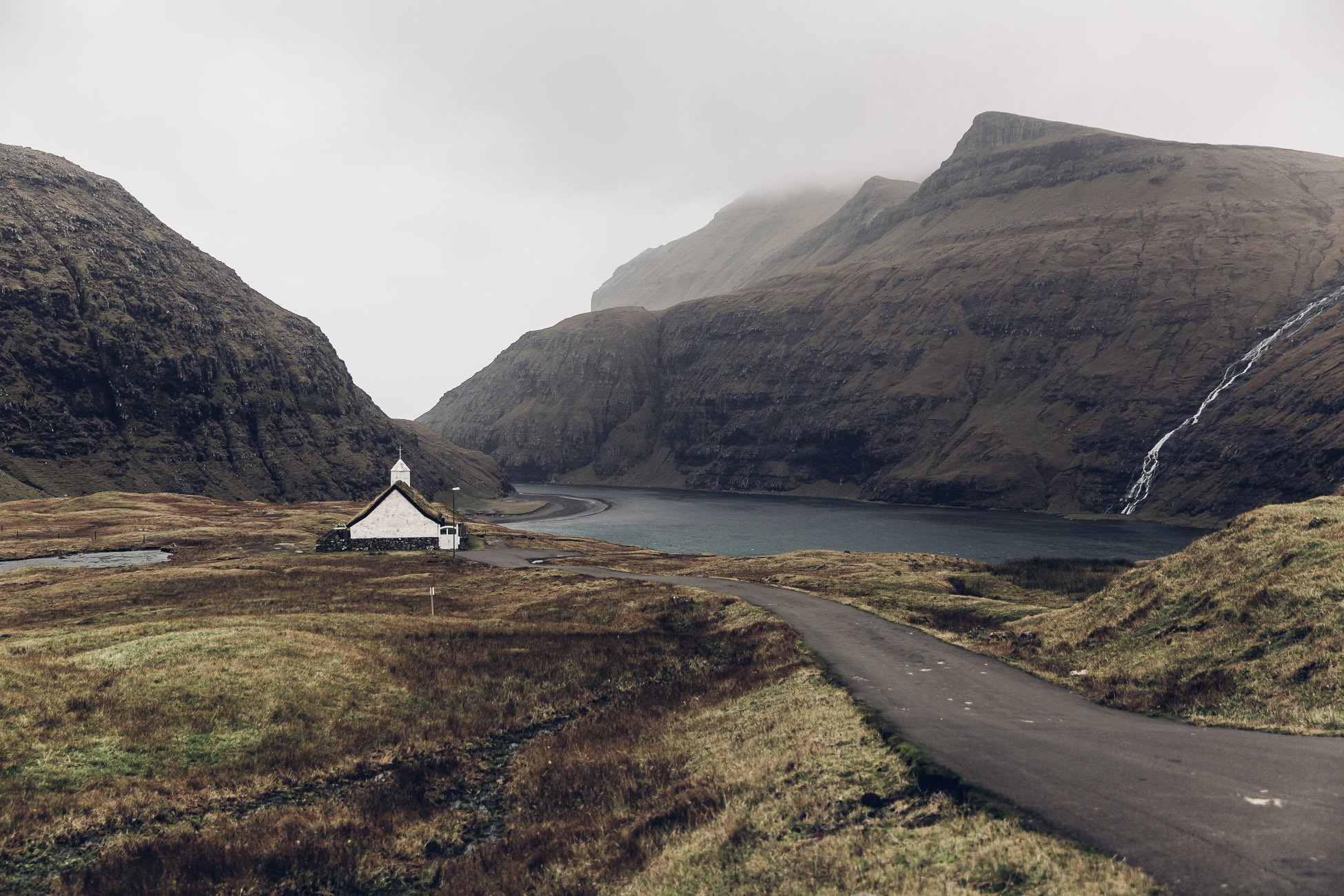 Saksun is one of the most famous villages of the Faroe Islands. In October it’s still rather empty!
Saksun is one of the most famous villages of the Faroe Islands. In October it’s still rather empty!
3. What to do on Eysturoy
The second largest island is located just East of Streymoy and has a couple of highlights as well. We recommend the following locations and explorations on Eysturoy:
- Drive the scenic road from Funningsfjørður to Funningur alongside the coastline
- On the way to Gjógv park your car and hike alongside the Slættaratindur mountain for some incredible views (but be careful when it’s windy up here)
- Visit the port and sleepy town of Gjógv
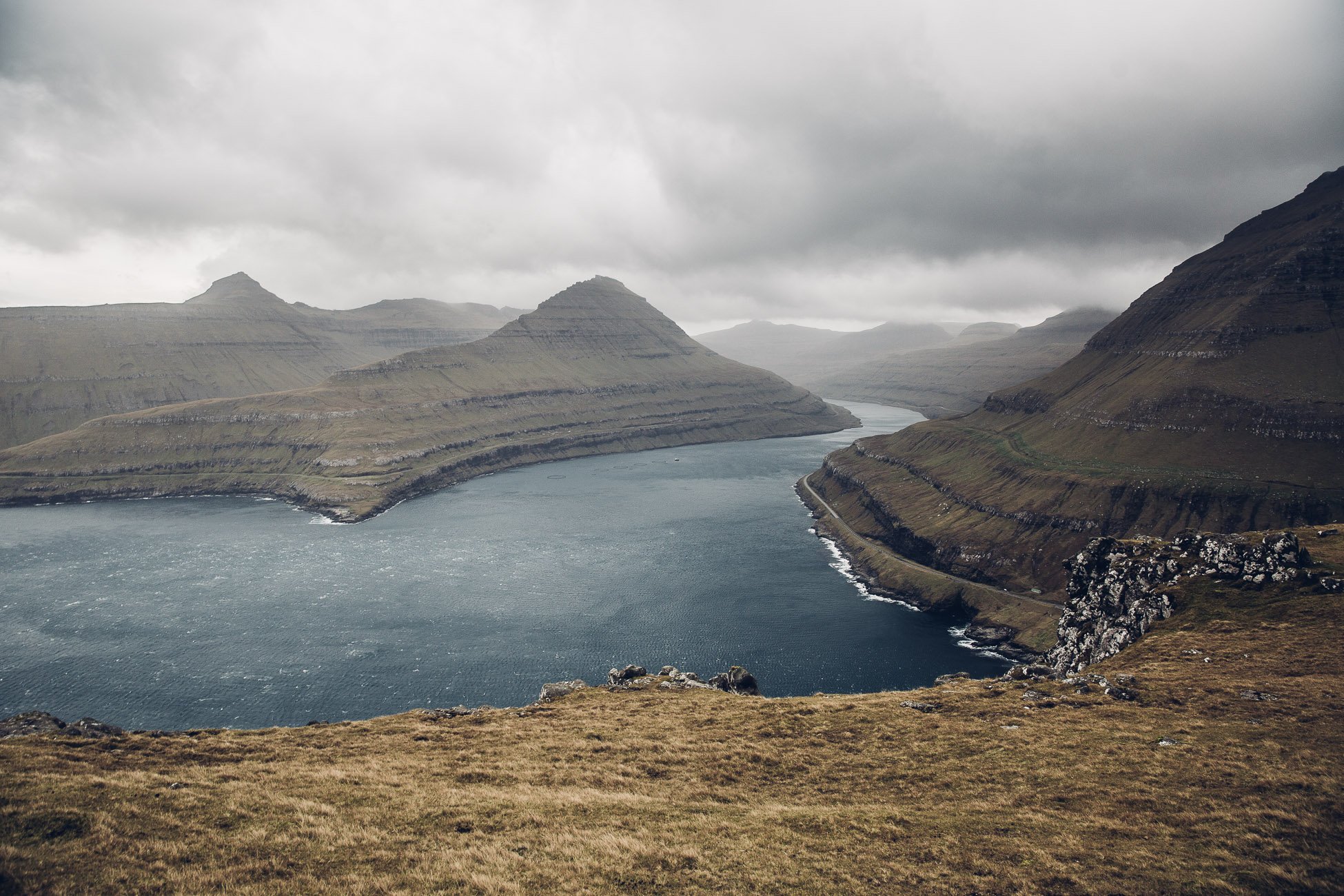 The view from the Slættaratindur mountain range on a particularly grey and windy day – still quite breathtaking.
The view from the Slættaratindur mountain range on a particularly grey and windy day – still quite breathtaking.
These were the highlights on the 3 main parts of the Faroe Islands. You can copy and paste this to your “Must see list”, but further down we’ll give you an insight how we split those up in a one week Faroe Islands itinerary.
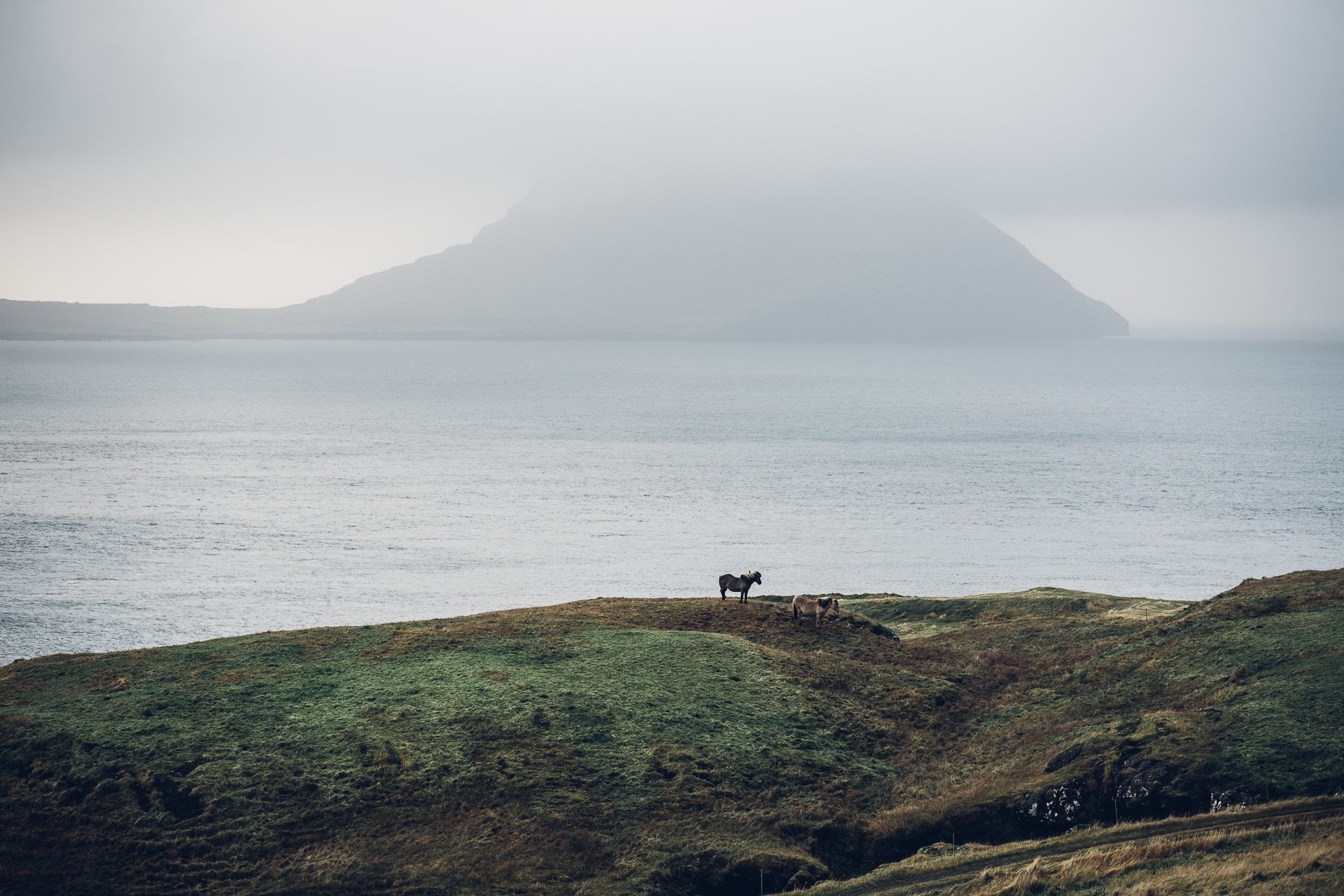 Horses are quite a common roadside attraction on the Faroe Islands.
Horses are quite a common roadside attraction on the Faroe Islands.
The main part about visiting the islands will be hiking and riding around in your car discovering views like these.
Which other islands to visit?
Now that we gave you a glimpse of the 3 main islands it’s time to check out one of the more remote islands. We initially wanted to visit Kalsoy with it’s famous Kallur Lighthouse, but the ferry schedule crossed our plans (there’s not too many ferries going there off season). Therefore we made a change of plans and took a detour to one of the most remote island in the far East called Fugloy. This was the best decision ever!
 The island of Fugloy is so remote, you probably won’t meet any other visitors.
The island of Fugloy is so remote, you probably won’t meet any other visitors.
Fugloy – the hidden gem
Not only did we fly a helicopter to Fugloy (which only costs 110 DKK, equivalent to 15 Euros), but we also managed to explore the island all by ourselves and then take the local ferry back together with some sheep herders and fishermen. We spent a couple of hours alone at the island and enjoyed the spectacular views. This was a true adventure (and worth a separate blogpost)!
So this was our “Best of the Faroe Islands”, let’s dive deep into the itinerary to help you plan a perfect visit of the Faroe Islands in one week.
Faroe Islands travel planning: Our full one week itinerary
Now that you know what the main highlights are – let us share our complete one week Faroe Islands itinerary to help organise your visit!
Day 1
Arrive at Vágar airport and pick up your rental car. Then drive to your hotel or cabin and check-in. If you’re still up for it discover some of the nearby bays for sunset. We recommend to drive to Syðradalur to get a first glimpse of the incredibly vast landscapes (and maybe you’re lucky and there’s a sunset to start off the trip).
First impressions of the beauty of the Faroe Islands on our way from Tórshavn to Syðradalur.
We watched the sunset from Norðradalur in the end!
Day 2
In October the sunrise comes late – after 8am. So if the weather permits, check out the sunrise somewhere along the beaches of Tórshavn. Maybe you’re lucky and meet some locals who take an early morning swim (even though the water temperature is well, freezing!).
Then we recommend to discover the capital city of Tórshavn and maybe do some shopping (Guðrun & Guðrun offer amazing knitwear from local sheep wool).
Guðrun & Guðrun Shop
Niels Finsensgøta 13, Tórshavn 100, Faroe Islands
Have lunch in the city and then get ready for your first Faroe Islands hike. We hiked along Sørvágsvatn lake to the famous cliff of Trælanípa.
This was our first and rather easy hike. Even though we only started after lunch and took it slowly and stayed at the cliff for a while marvelling at the views, we still had enough time afterwards to meet some local surfers in Saksun in the evening.
Surfers use the evening swell in Saksun
When we arrived in Saksun it was low tide and we went through the first bay all the way to the second, staggered bay in the back. We watched the surfers in the evening light and were quite happy with our first day on the Faroe Islands.
This is the bay of Saksun at low tide – you can walk past the cliffs on the left side to arrive at the second bay.
Day 3
We used our third day for the adventurous expedition to the remote island of Fugloy. To get there you have to take a helicopter, which the locals use as a regular means of transport. This will be easily one of the best memories you make on the Faroe Islands – nowhere in the world you’ll be able to fly with a helicopter without spending a fortune.
Views from the helicopter on our way to the island of Fugloy.
The downside: You’re not allowed to make roundtrips (this is actually not planned to be a tourist attraction, but really a public transport service for the Faroese). Therefore – wherever you go by helicopter – you’ll have to get back by boat. Now you don’t need to be sad about this, the ferry ride was equally exciting for us.
Before we went back by ferry we explored the small island of Fugloy, discovered the local church and cemetery and made friends with many sheep. There’s not a lot to see or do here, but wander around and get lost in the incredible landscape.
Fugloy was a surprisingly interesting little island.
Although there’s not a lot to do and see and the locals didn’t really understand why we would visit this place.
After this adventurous day in the remote parts of Faroe Islands we recommend to enjoy a cozy dinner in your cabin and relax.
Day 4
It’s time to discover the most famous waterfalls of the Faroe Islands. Mulafossur is probably the most iconic waterfall (of all the countless ones on the 18 islands).
Mulafossur waterfall in the village of Gásadalur.
To get there you can easily drive nowadays, as a tunnel has finally been built to cross the mountain range, which used to cut off the town of Gásadalur from the rest of the island. We decided to take the old school route and hike across the mountain range – the way the local post officer had to do it everyday before the tunnel was built in 2004!
The hike brought us to many impressive viewpoints and was totally worth the extra mile.
For lunch we recommend to check out “Nordic House” in Tórshavn. The restaurant is located inside a cultural center, which hosts events, exhibitions and much more! In the afternoon we recommend you go and check out another waterfall, which is easily discovered as it’s located right next to the street: Fossá waterfall!
Fossá waterfall is impressive and easy to reach!
Day 5
Today you can take your time to discover some of the lesser known landmarks of the Faroe Islands. We started our day with a sunrise at Bøur and then hiked to the famous “Troll’s finger” (Trøllkonufingur).
Bøur is a cute little fishermen’s village and located perfectly to watch a wonderful sunrise (if you get a clear sky).
The hike to Trøllkonufingur is super easy and on the way you pass by lovely wooden cabins and maybe a flock of geese as well. We were surprised to discover that Faroese people keep a goose just like their sheep – in a fenced off area close to their homes.
This is the Trøllkonufingur – a famous rock formation.
After this hike we recommend to check out the famous Kvívík Igloos. You can also rent those during your stay, but from what we could judge they look way more interesting from outside than cozy from the inside. The interior design is rather sparse and looks quite cold and unwelcoming.
Sometimes the Faroe Islands feel like a different planet!
Day 6
Today the journey brings you to Eysturoy – the third main island of the Faroe Islands. Here you can discover the famous Harbor of Gjógv, but don’t expect too much. When we got there we walked around a bit, but everything was closed (due to the off season probably). The Harbor is quite iconic, but nothing you would need to see really.
On the way back from Gjógv you can park your car alongside the road to Funningur to hike a little bit of the mountain range of “Slættaratindur”. If you follow the paths over the meadows towards the bay you’ll be rewarded with incredible views – although on windy days this might be quite adventurous (when we say adventurous we mean downright crazy, at one point we were lying down in the grass to not be blown off the cliffs) 🙂 So be careful there!
Our hike of Slættaratindur was a bit more adventurous than expected – due to heavy winds.
Day 7
Before leaving the island on your flight to Copenhagen you can maybe squeeze in one last viewpoint – from the bay of Tjørnuvík. Here you can spot two famous rocks called “Risin og Kellingin”.
Risin og Kellingin as spotted from the beach of Tjørnuvík.
We actually preferred the view from the other direction – which isn’t nearly as famous though. For this angle you’d have to cross the bridge to the other island and drive to Eiði!
Conclusion of our Faroe Island Itinerary
To summarise we can say we loved our week on the Faroe Island. It was cold, windy and wet – yet we felt the mysterious vibe of the unchartered waters of the rough Atlantic Ocean. The islands still feel very original and undiscovered.
The Faroe Islands feel like a mystic fairy tale from an old Scandinavian book.
Having said this the islands are probably not for everyone! If you aren’t comfortable with gusty winds and the (rather frequent) sprays of rain, hiking and exploring muddy landscapes you won’t be happy here.
You better get used to attire like this when visiting the Faroe Islands 😉
There’s not a lot of infrastructure for travellers seeking comfort, relaxation or cultural events. If you visit the Faroe Islands be ready for a heavy dose of nature sprinkled with the flair of the Nordic life – slow and silent, but a little cold.
If you want to read more about our discoveries of the Faroe Islands check one of these blogposts:
1.) Hiking to the iconic place where the lake floats above the ocean
2.) Riding a helicopter to a remote island
3.) Exploring the iconic Mulafossur waterfall

